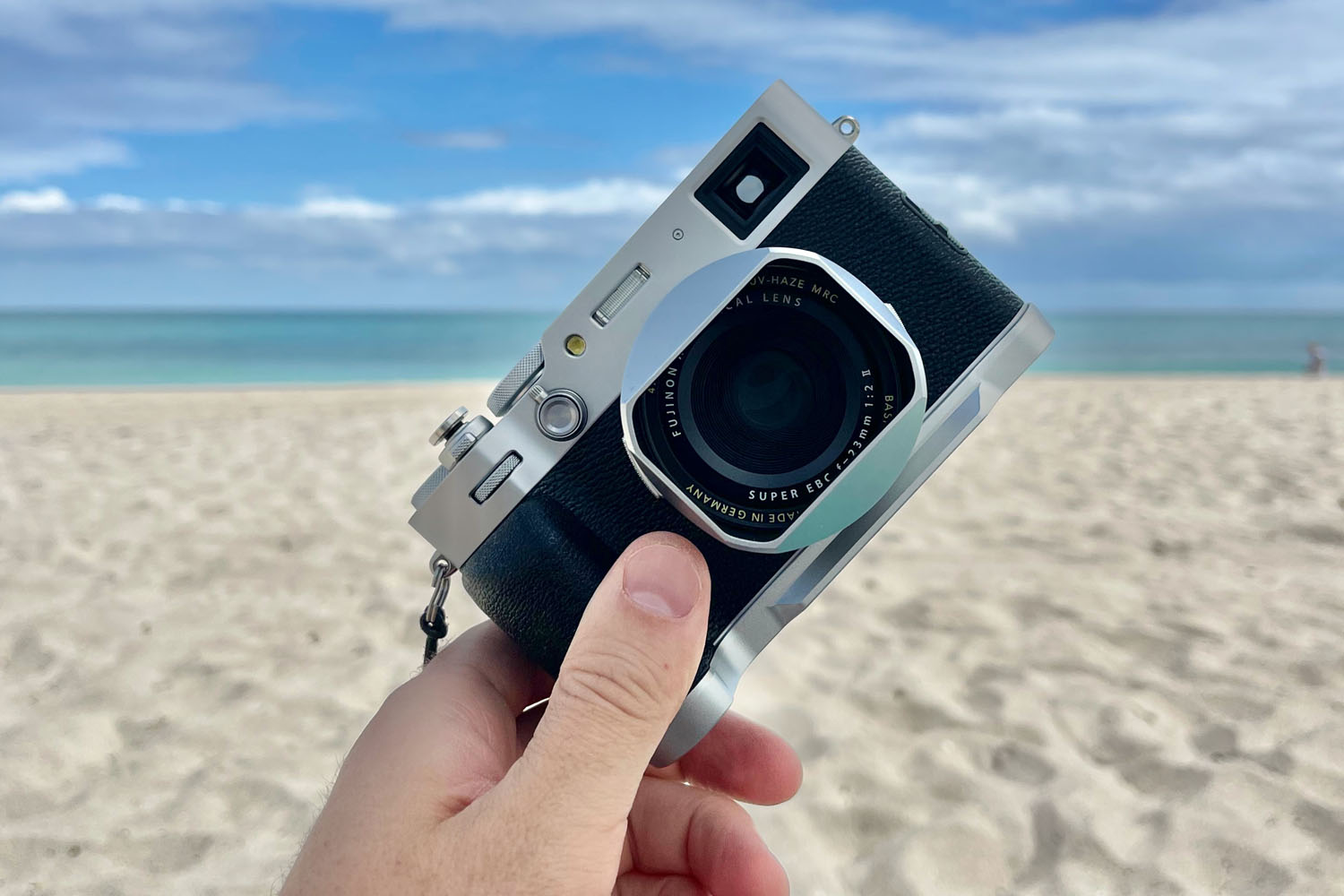Small Towns, Great Impressions
When we planned to visit Portugal again in 2022, we wanted to travel through the territory north of Lisbon. I turned to several friends to help us decide where exactly to go, and in response, I received lists of small cities that would be worth visiting. Also came some recommendations regarding places and attractions which can be interesting to take a photo of.
I decided to look through Google Images at those objects and those photos that visitors had already taken before me.
Then I realized that my photos could just be copies. In fact, such photographs will probably not be of any interest to me and to anybody else. This was a challenge and something to think about.
Without pretending to produce a work of art, I would like to present something of myself in my photographs – my own impressions.
After looking at these other people’s photos, we have certain ideas about what we are going to see. We went on the trip with the hope of comparing our real impressions with expectations.
It was a family trip during our vacation, not a dedicated “photo tour”.
So I decided to take with me just one camera and one lens for it, the Fuji X-T30 and Fujinon XF18-55mm F2.8-4.
Cascais
We started our journey from Cascais.
According to the description on the Internet, this is a premium resort and holiday destination close to Lisbon.
We expected to see a lot of tourists, bustling street life, crowded beaches and bars. But in the first week of October, the city looks different. Аlready in the first minutes we saw a lot of people who looked more like office workers than tourists by the sea.
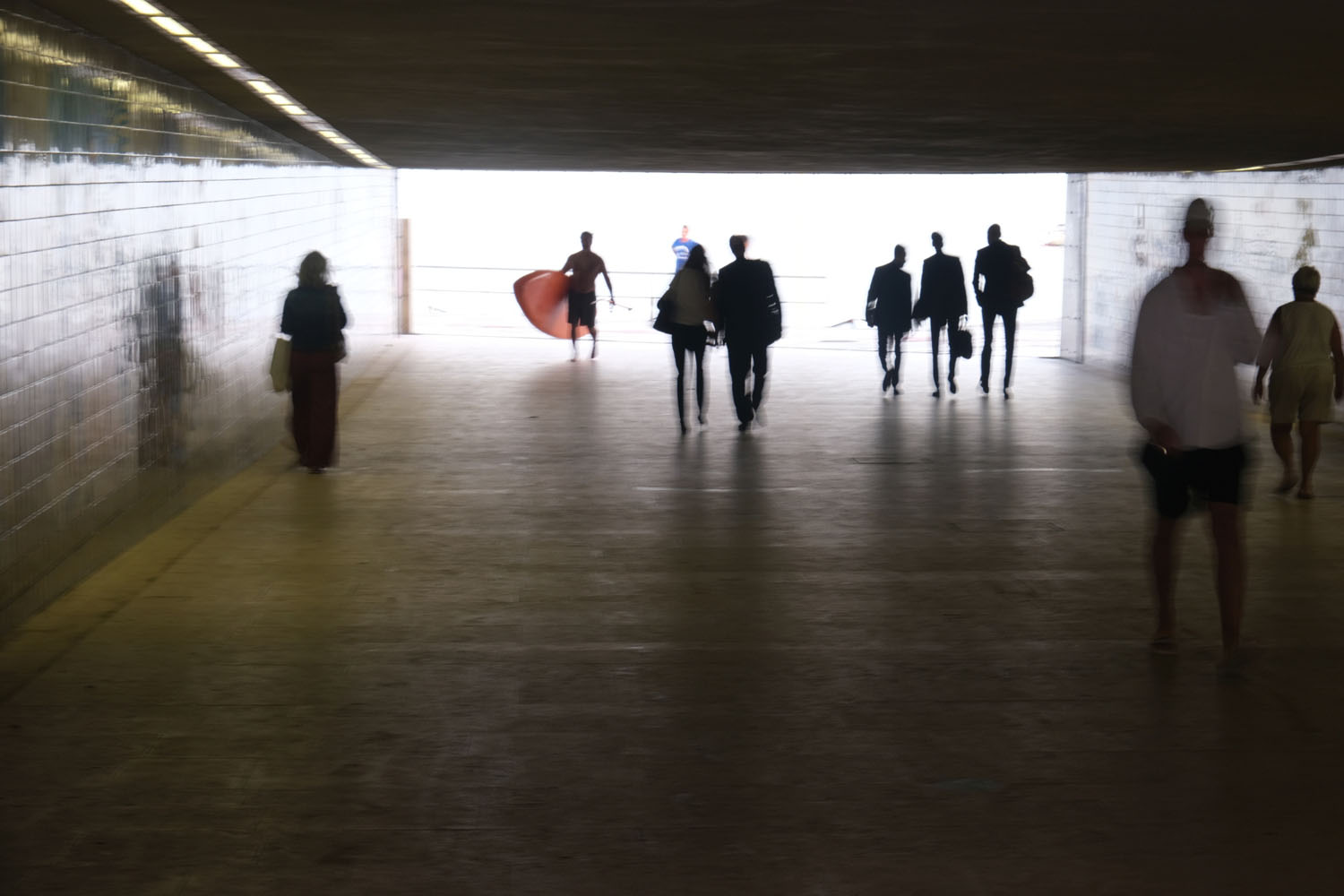
We really liked the calm atmosphere and the uncrowded beaches. Lonely fishermen remind us that Cascais was once a fishing village. Not far from the famous Santa Marta Lighthouse, we saw a group of people, probably tourists. We couldn’t figure out what exactly they were looking at in this place.
Contrary to our expectations of a lively tourist destination, Cascais has impressed us as a cozy modern town that retains the charm of a traditional fishing village. It’s a place you want to come back to.

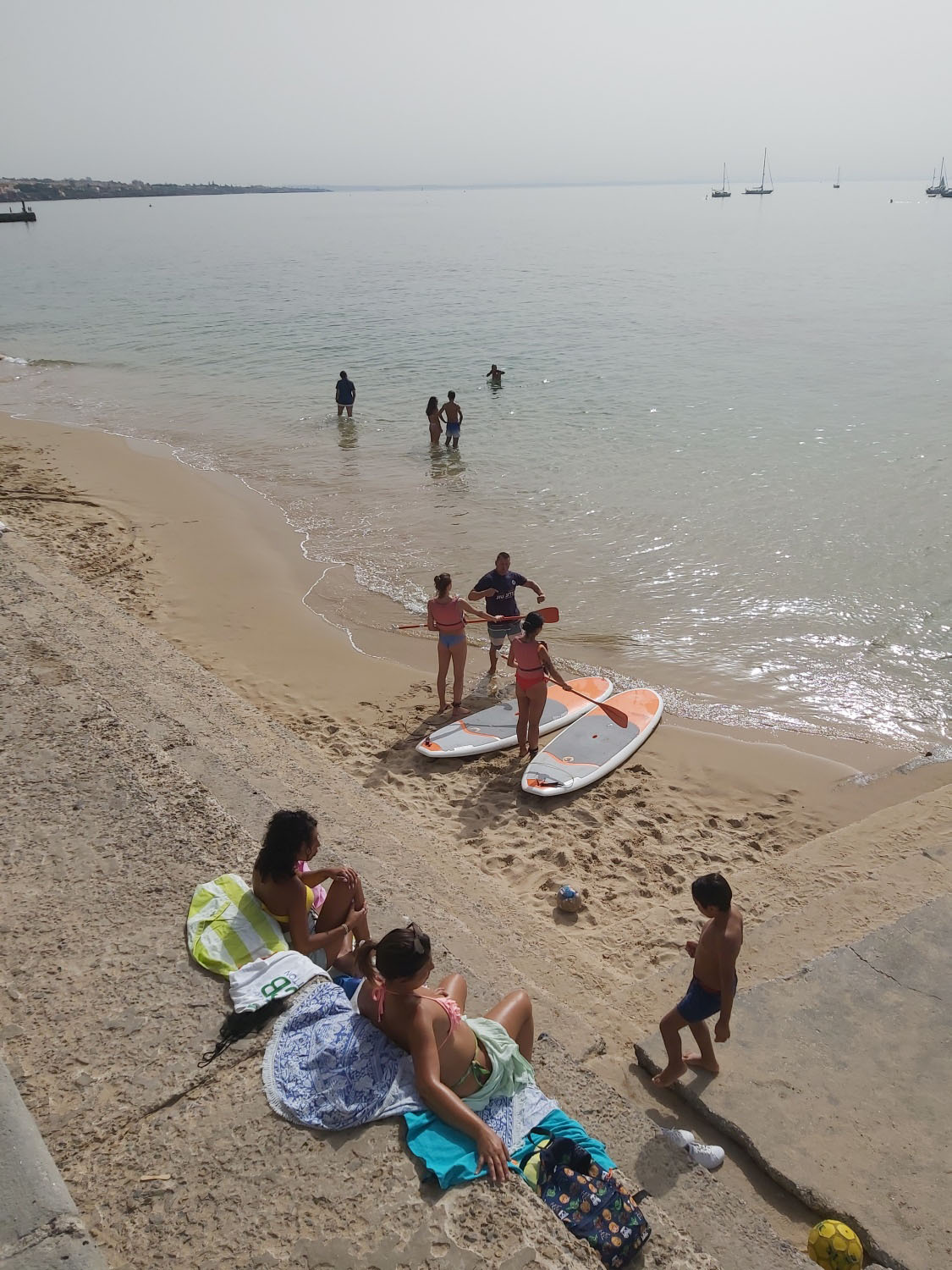
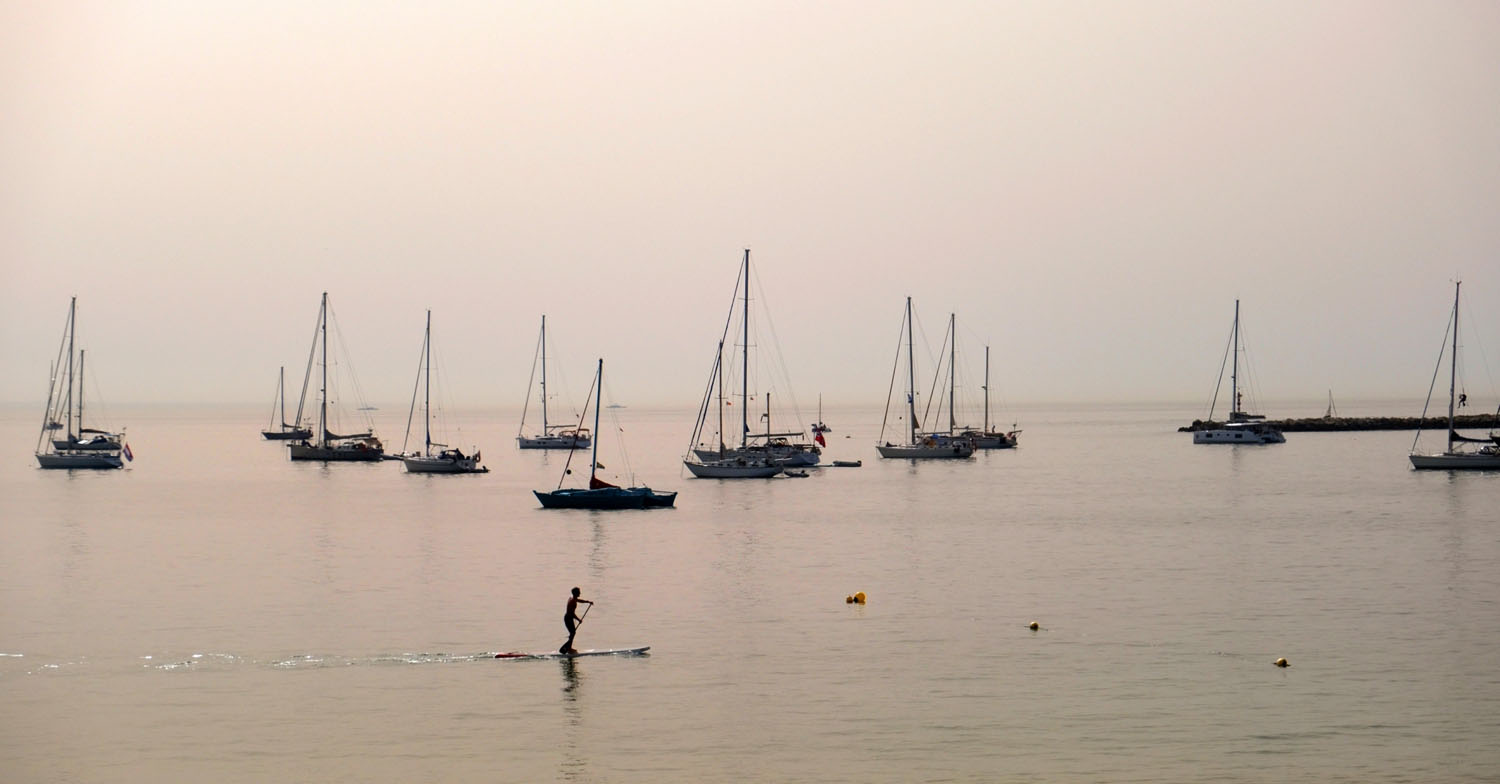
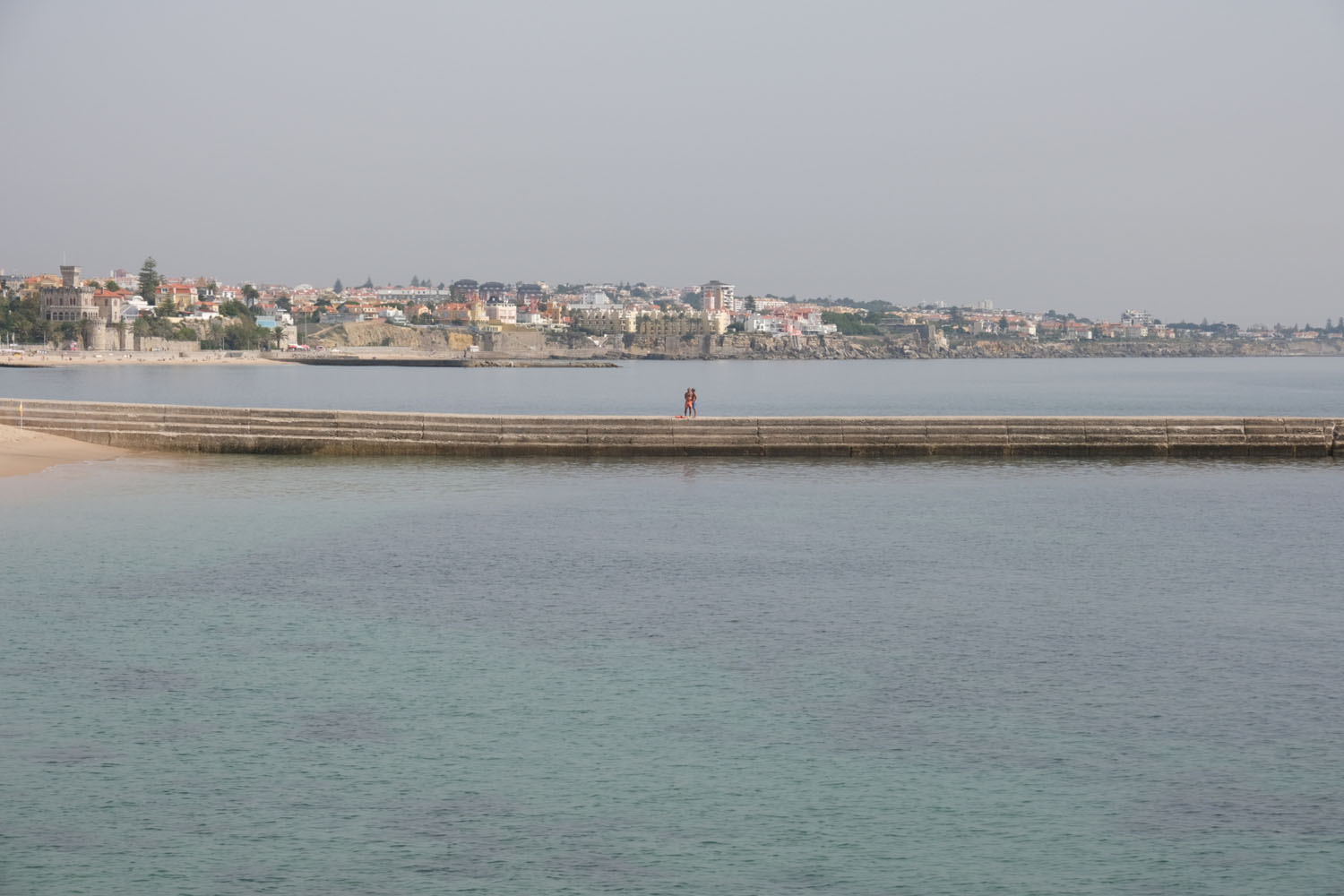
RIGHT: Fuji X-T30 . Fuji XF18-55mmF2.8-4 @55mm . F/9 . 1/280″ . ISO 160
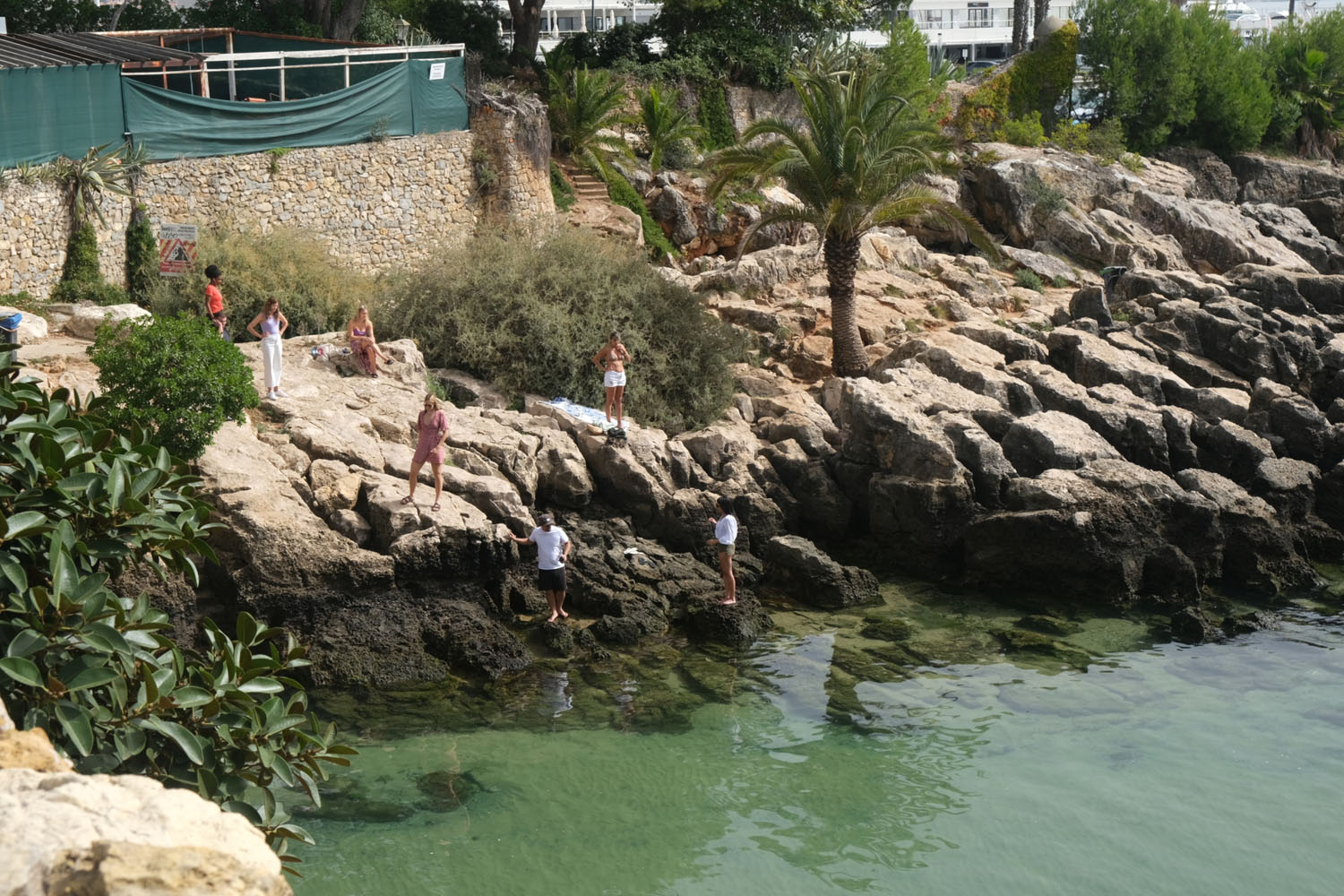
Mafra
Half an hour’s drive from Cascais is a city, Mafra, famous for having the largest and most beautiful palace in Portugal. The palace is also famous for its large collection of very rare books.
The palace amazes not only with its beauty but also with many of its own: there are more than 1,000 rooms; it is the first with a height of 65 m that was built in Portugal; 6 organs that are built to play together; and of course, a library of 36,000 volumes.
The Mafra Palace has 2 bell towers on either side of the Basilica. The total number of bells here is 98, which makes it the largest number in history not only in Portugal, but possibly in the whole world. It is said that the ringing can be heard within a radius of more than 20 km!
There is also a large and very nice park that is well worth a visit.
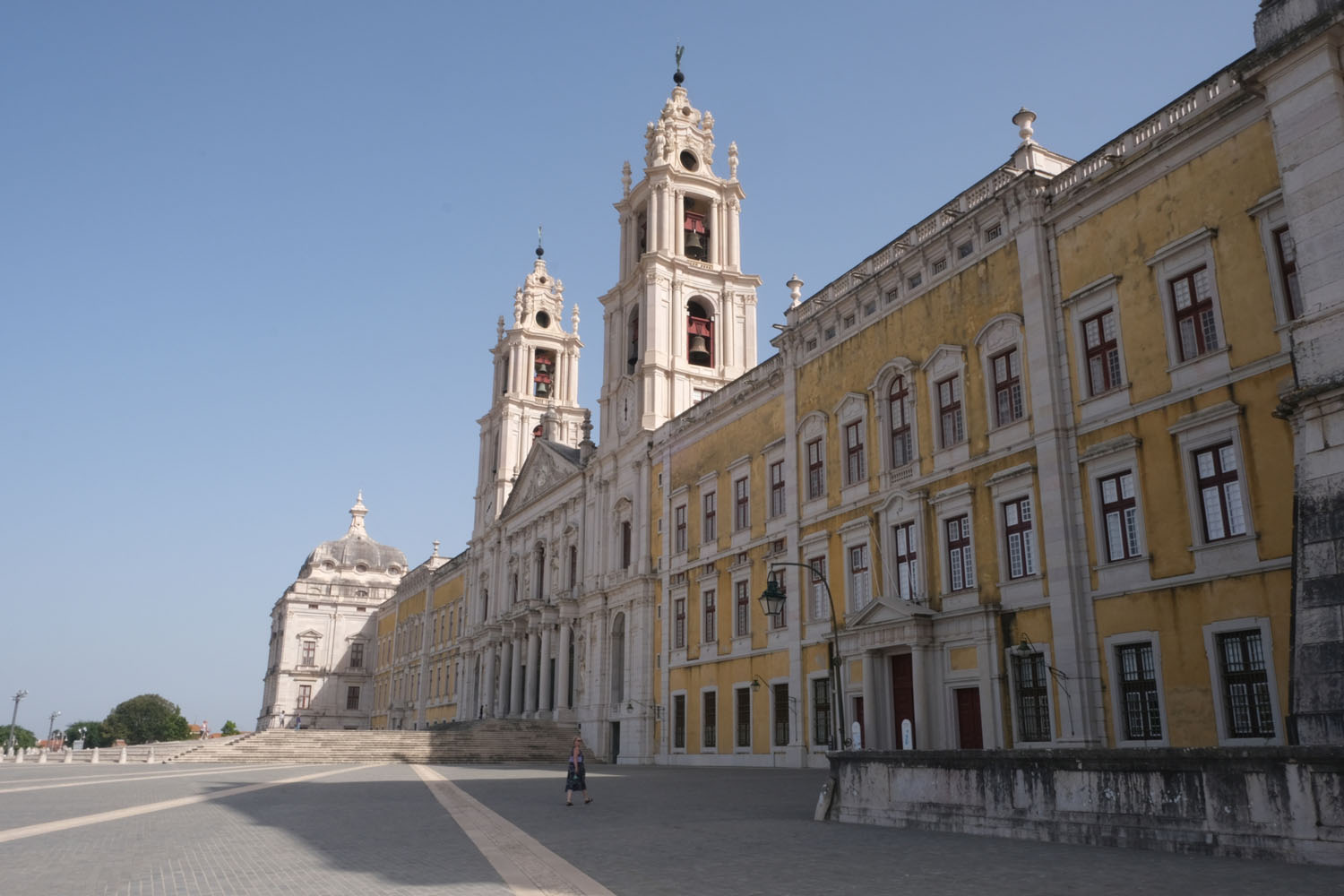
There are many very beautiful halls in the palace. You can wander for a long time along the endless passages and stairs and move from hall to hall and feel like you are really in a historical palace.
The drawings on the floors and the paintings on the ceilings are striking. You can look at the ”model” of the palace for a long time and be surprised by its size and proportions. The library deserves special mention. You can visit inside only with special permission. But you can admire its size, the number of books, the beauty of the room and especially the marble floor at the entrance.


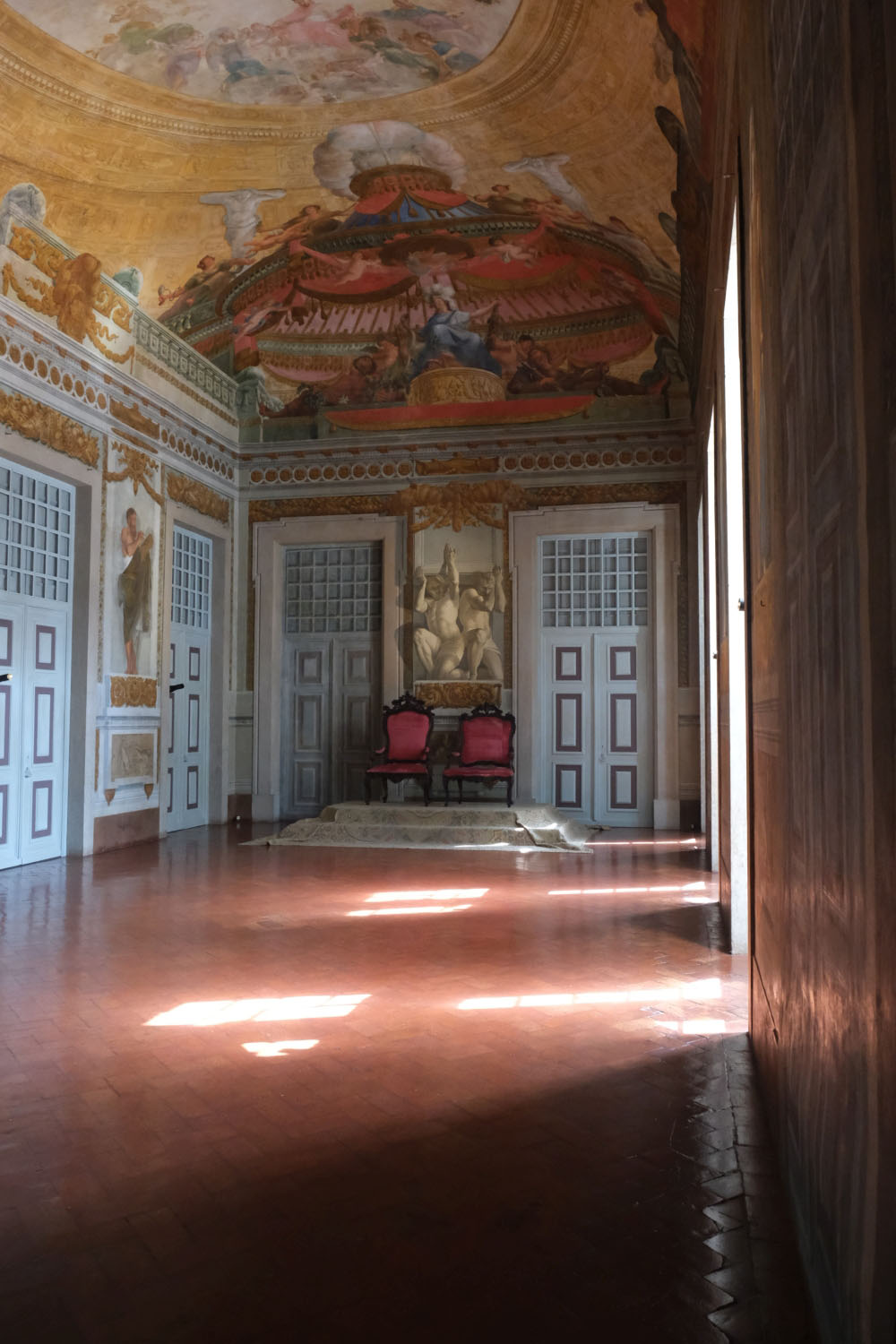
RIGHT: Fuji X-T30 . Fuji XF18-55mmF2.8-4 @18mm . F/5.0 . 1/90″ . ISO 5000
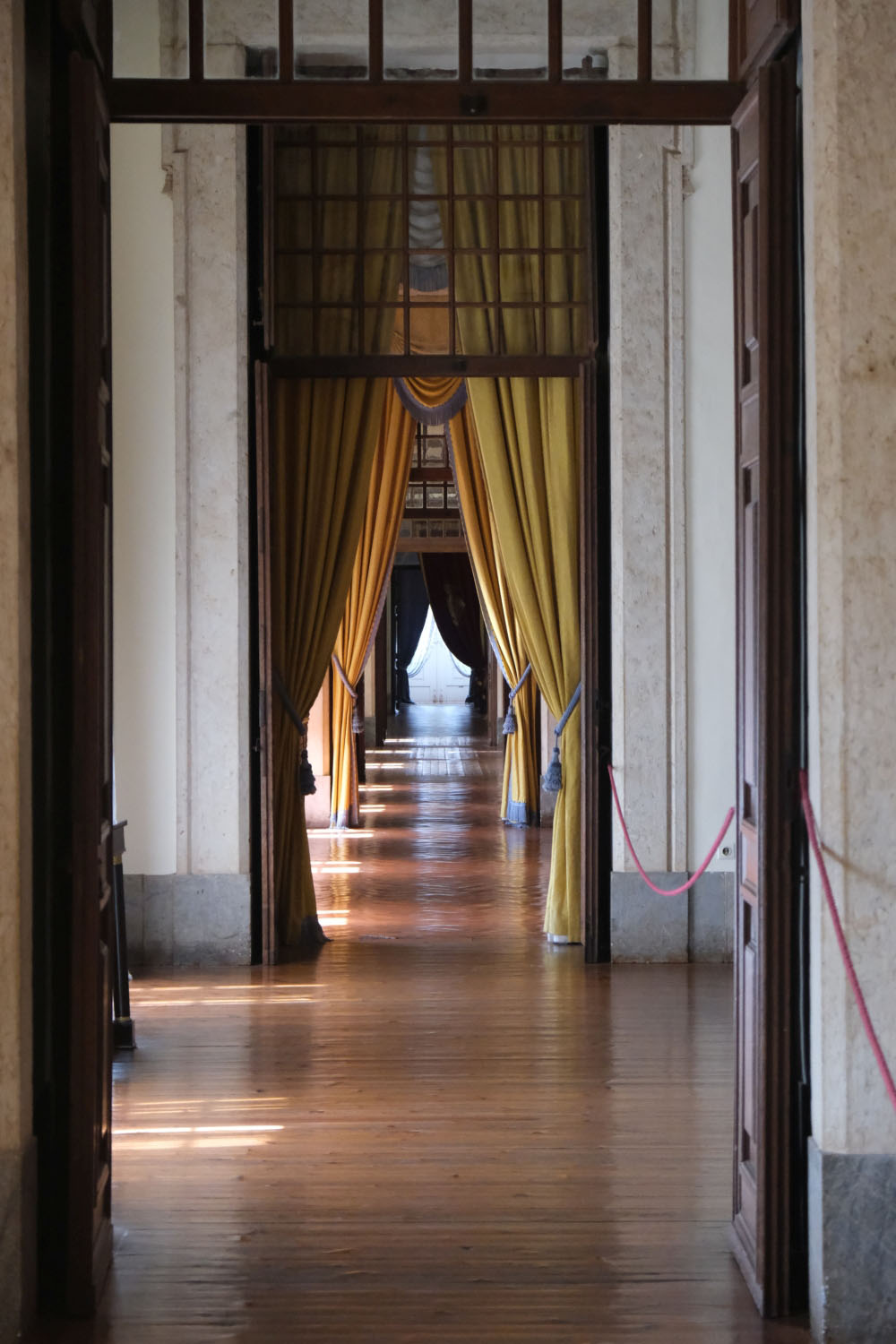

RIGHT: Fuji X-T30 . Fuji XF18-55mmF2.8-4 @18mm . F/5.0 . 1/125″ . ISO 8000
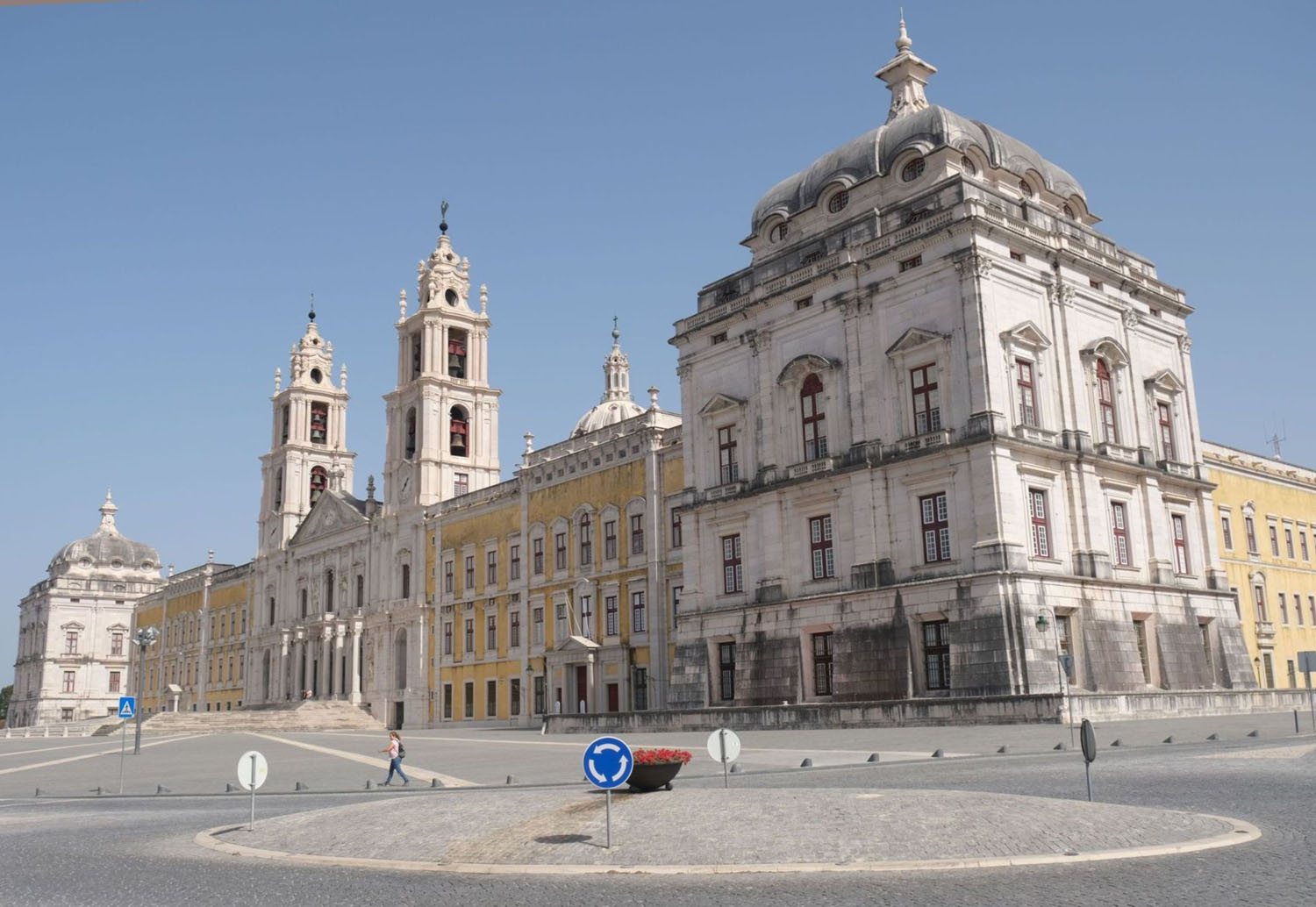
It is an amazing palace with a glorious history and remarkable and unique features.
It was surprising to see the empty square in front of the palace and almost no tourists!
We are delighted to have visited Mafra and the palace and would recommend anyone travelling in Portugal to visit this place.
Tomar
Tomar is famous for its castle-monastery, which belonged first to the Templars and then to their Portuguese heirs, the Order of Christ.
The castle was founded in the second half of the 12th century.
In the early 14th century, King Philip the Fair of France arrested the French Templars and began a lawsuit against them, which ended with Pope Clement V abolishing the order. King Denis I of Portugal, on the other hand, appreciated the merits of the Templars in the Reconquista. He organized a new Order of Christ. He gave him the Templar property and accepted the former Templars into the new order. Tomar Castle became their main residence.
In the 15th century, the Order of Christ was headed by Henry the Navigator.
There are a lot of marine themes in the Tomar Castle, including stone ropes, knots, sails, sea monsters and just figures of sailors.
The walls were painted by different Portuguese artists, and there are many statues and church decorations. At the same time, everything is very strict in this former monastery.
A few photos will help to convey the beauty of this Castle.

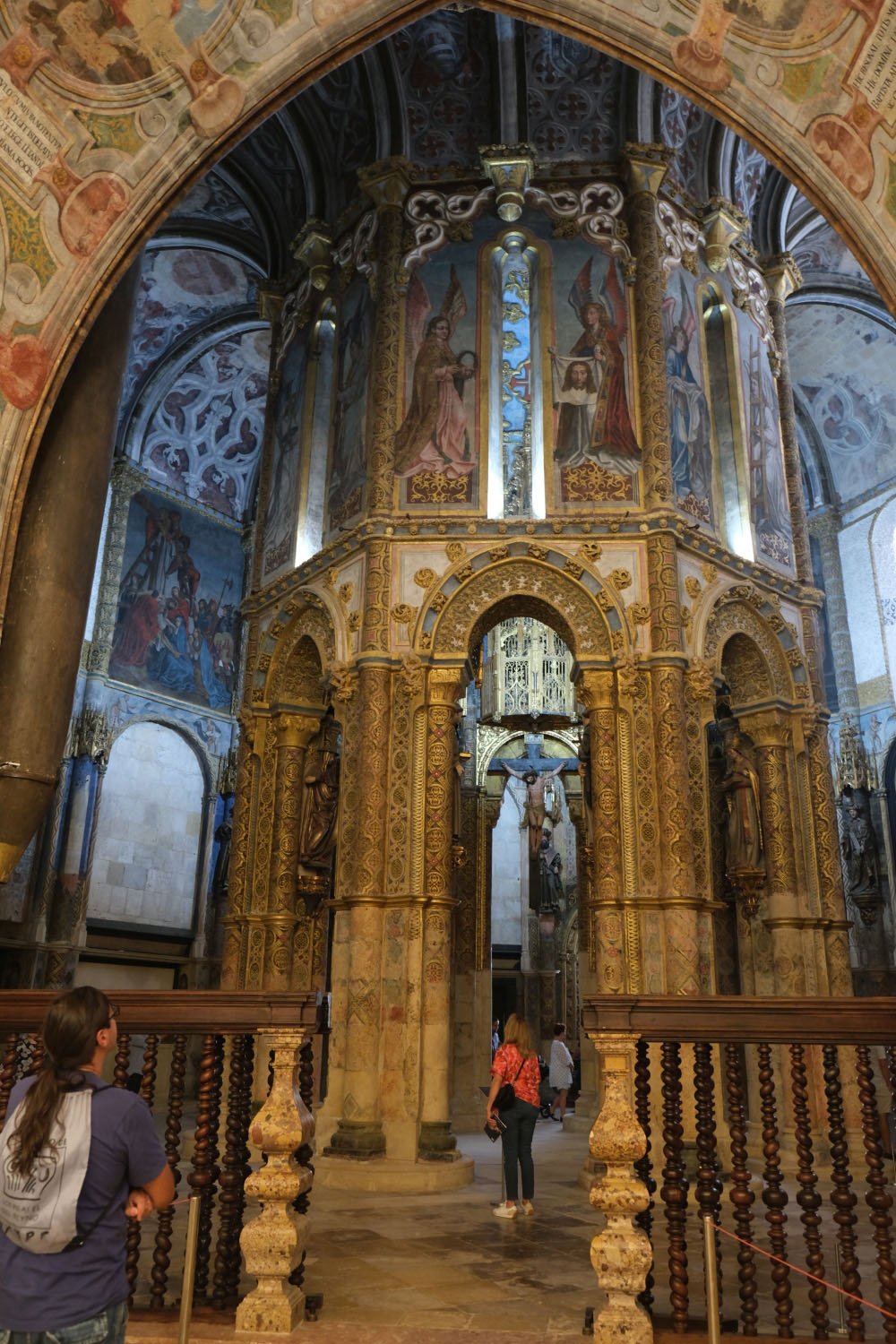

RIGHT: Fuji X-T30 . Fuji XF18-55mmF2.8-4 @18mm . F/5.6 . 1/80″ . ISO 160
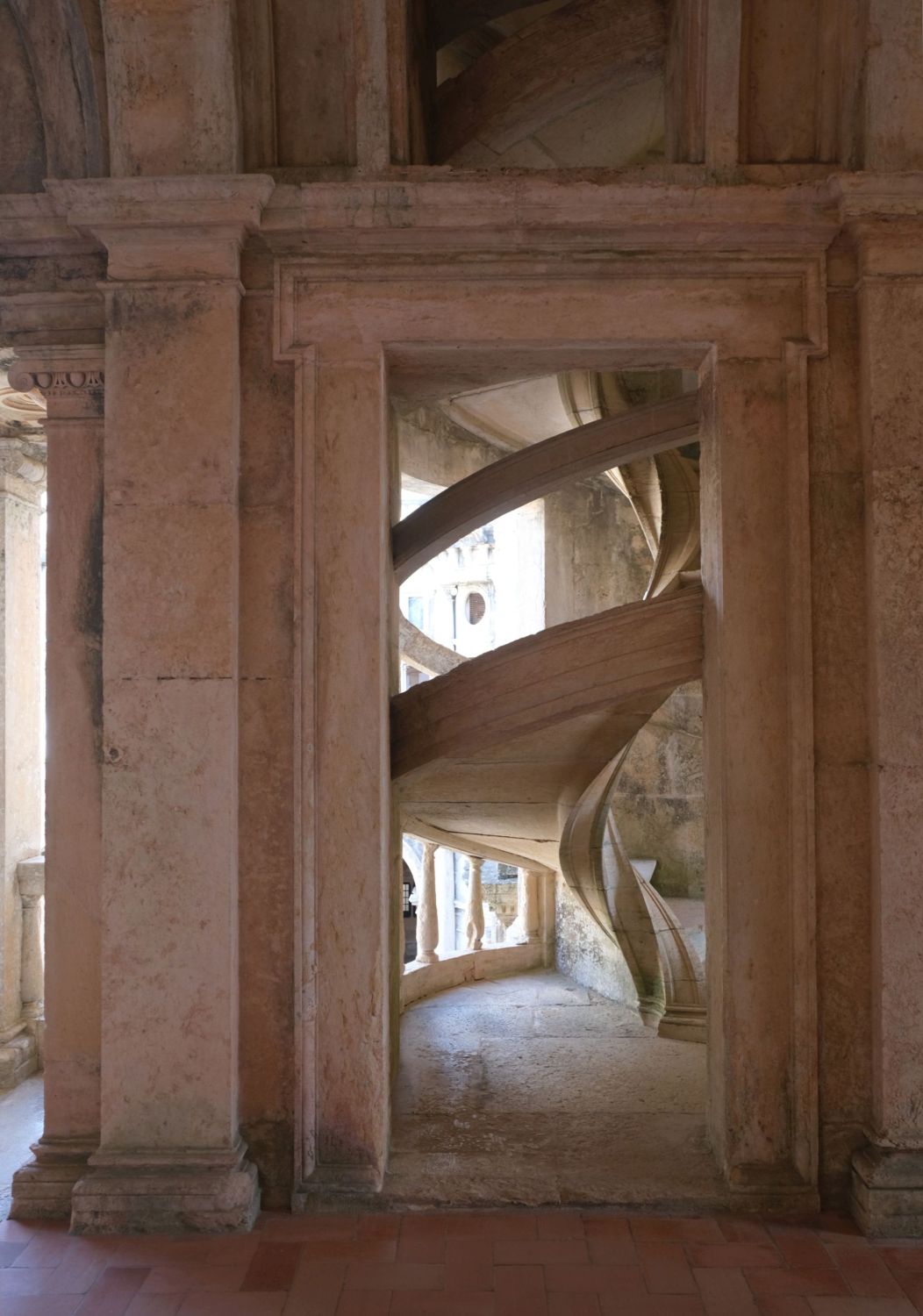
It is well known that «The Templars had a special attitude to grapes and winemaking, and always planted vast vineyards around their fortresses”.
They tried to accommodate the grapes growing and wine production to the specific conditions in different regions of their presence. Some people think that Templars treated the cultivation of grapes and the production of wine as a science.
So we were glad when we saw this room. We thought that the wine was here!

But we were told that this is a room for storing olive oil. More precisely, it became so only after the Tomar’s count Costa Cabral bought this part of the building to store oil here. Where is the storage for wine? No answer.
But we found a door from a modern elevator in this very ancient building. It was interesting to find such a detail of modern comfort! Maybe this elevator leads to the wine storage?
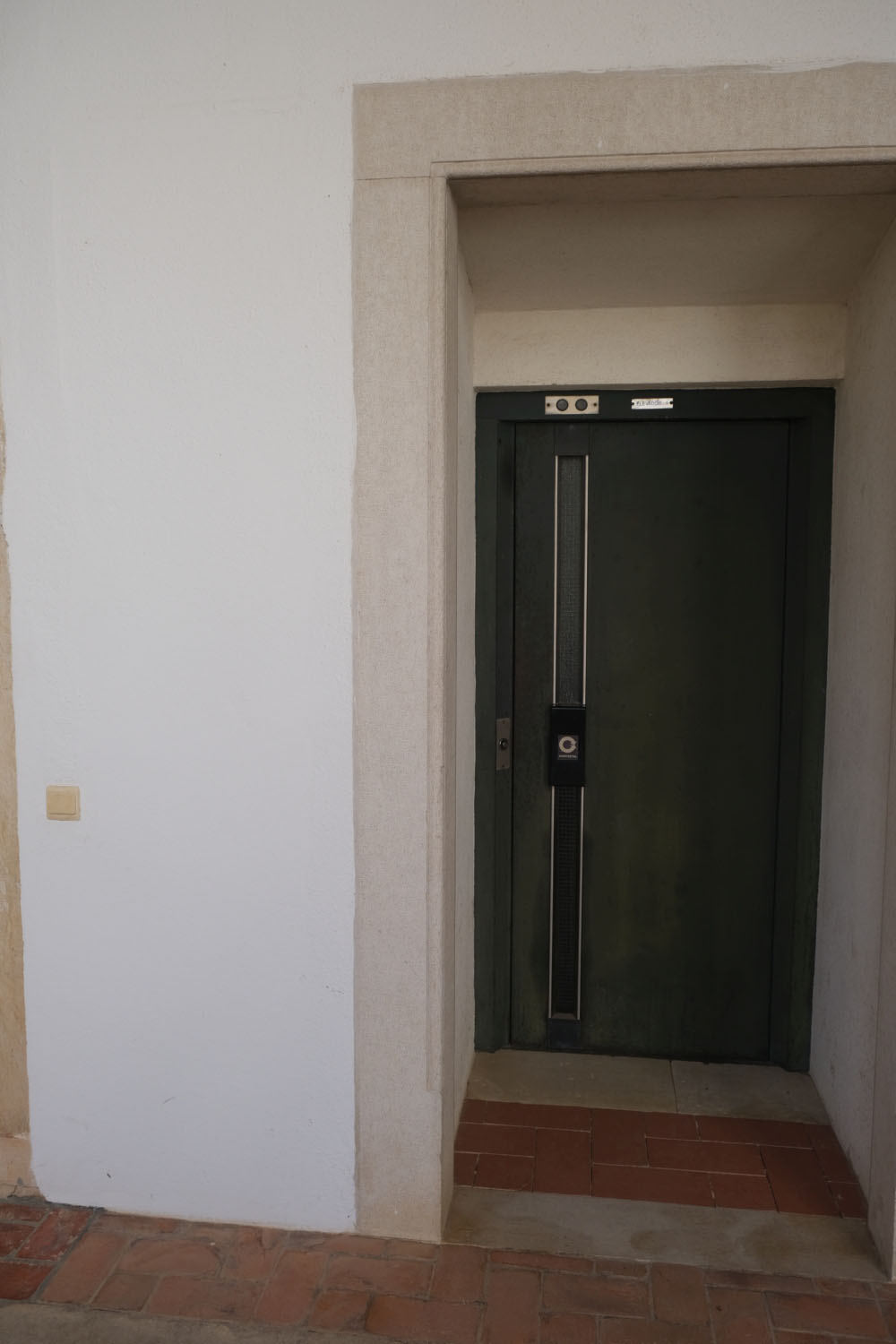
Outside of the Castle, on the nice square, we saw once again how modernity and history are combined in this place. Meat on a spit and a mobile phone look great together.

The city has a medieval synagogue built by Henry the Navigator in the 15th century for Jewish refugees from Spain. The building is preserved on nice and narrow Dr. Jacinto Street. Over the past time, the building has been used for various purposes (it was even a prison), but for the last almost 80 years, the Portuguese Jewish Museum has been located here.
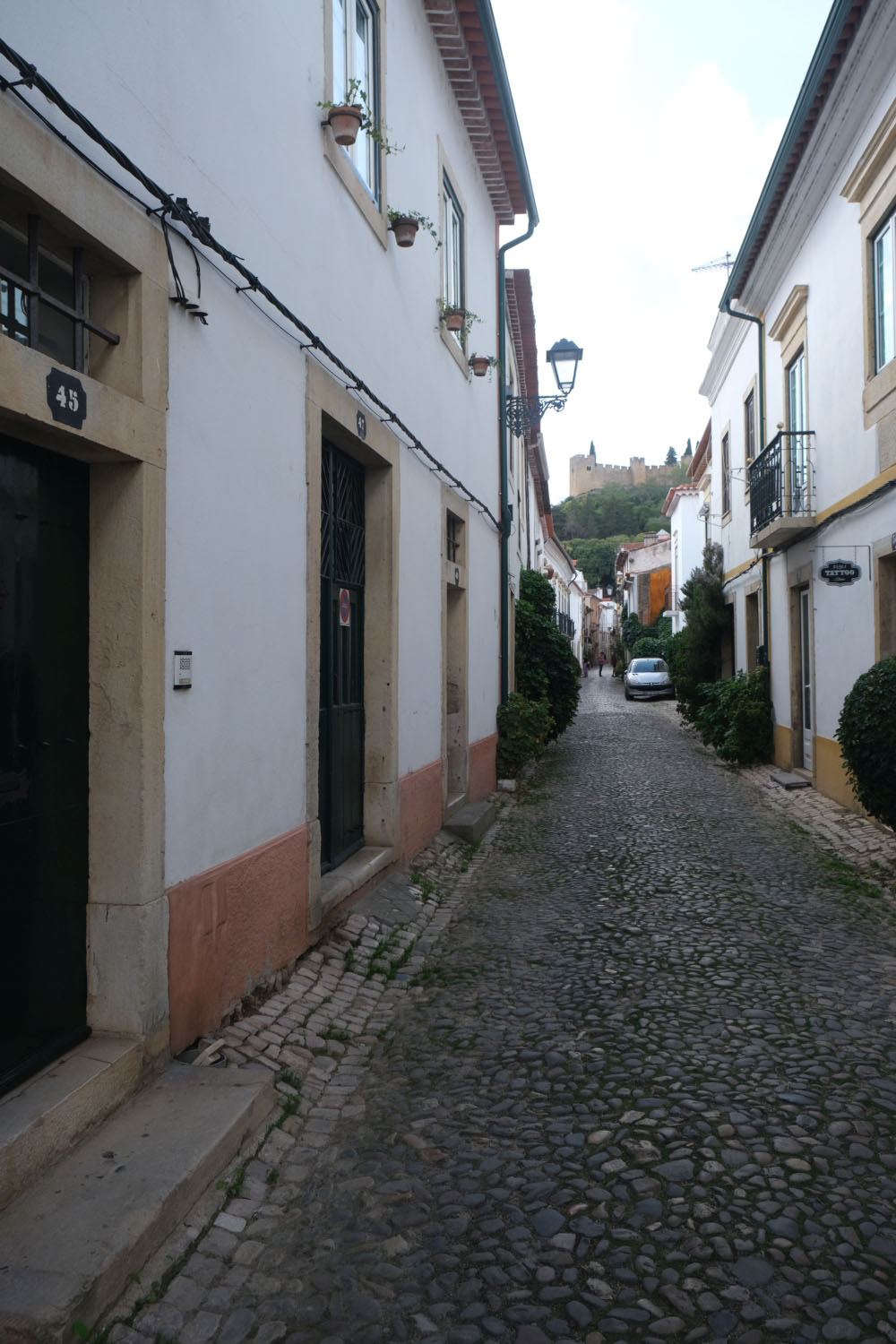
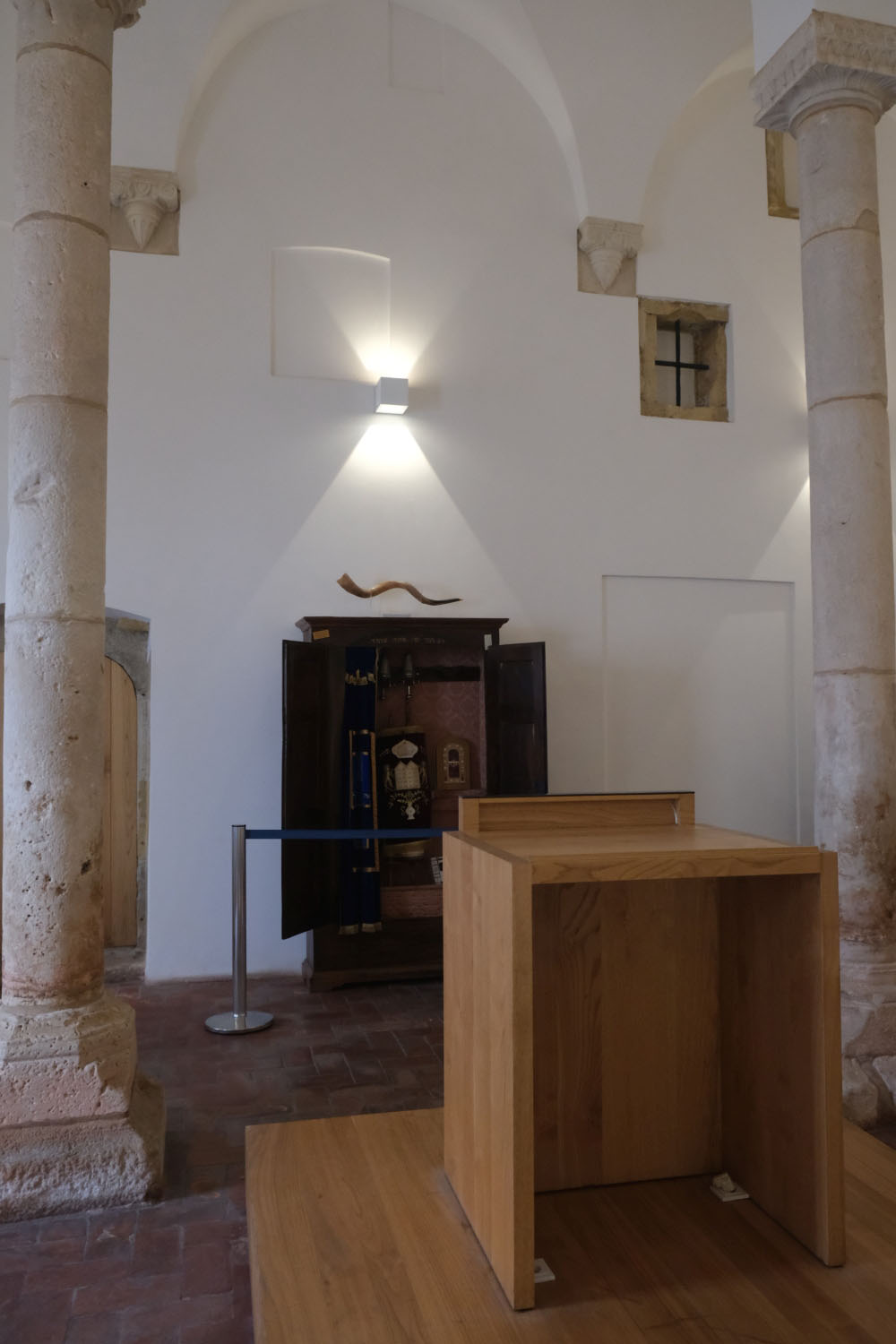
RIGHT: Fuji X-T30 . Fuji XF18-55mmF2.8-4 @18mm . F/5.6 . 1/60″ . ISO 4000
It is remarkable to discover that despite the difficult history of Jews in Portugal, this place has survived for centuries.
We understood that Tomar has a lot of other attractions, including a unique Museum of matchstick boxes.
Tomar is a real gem among small Portuguese towns.
Coimbra
The history of Coimbra dates back to the 6th century AD.
From 1139 until 1260, when it was replaced by Lisbon, the city of Coimbra was the capital of Portugal.
Coimbra is home to the country’s oldest university. It is a lively city, filled with cheerful students in historical “scenery”. The sheer number of attractions in Coimbra takes time to visit. We only had one day, but we made a few discoveries for ourselves. A beautiful view of the famous university opens from the embankment, which is a tourist attraction in itself.
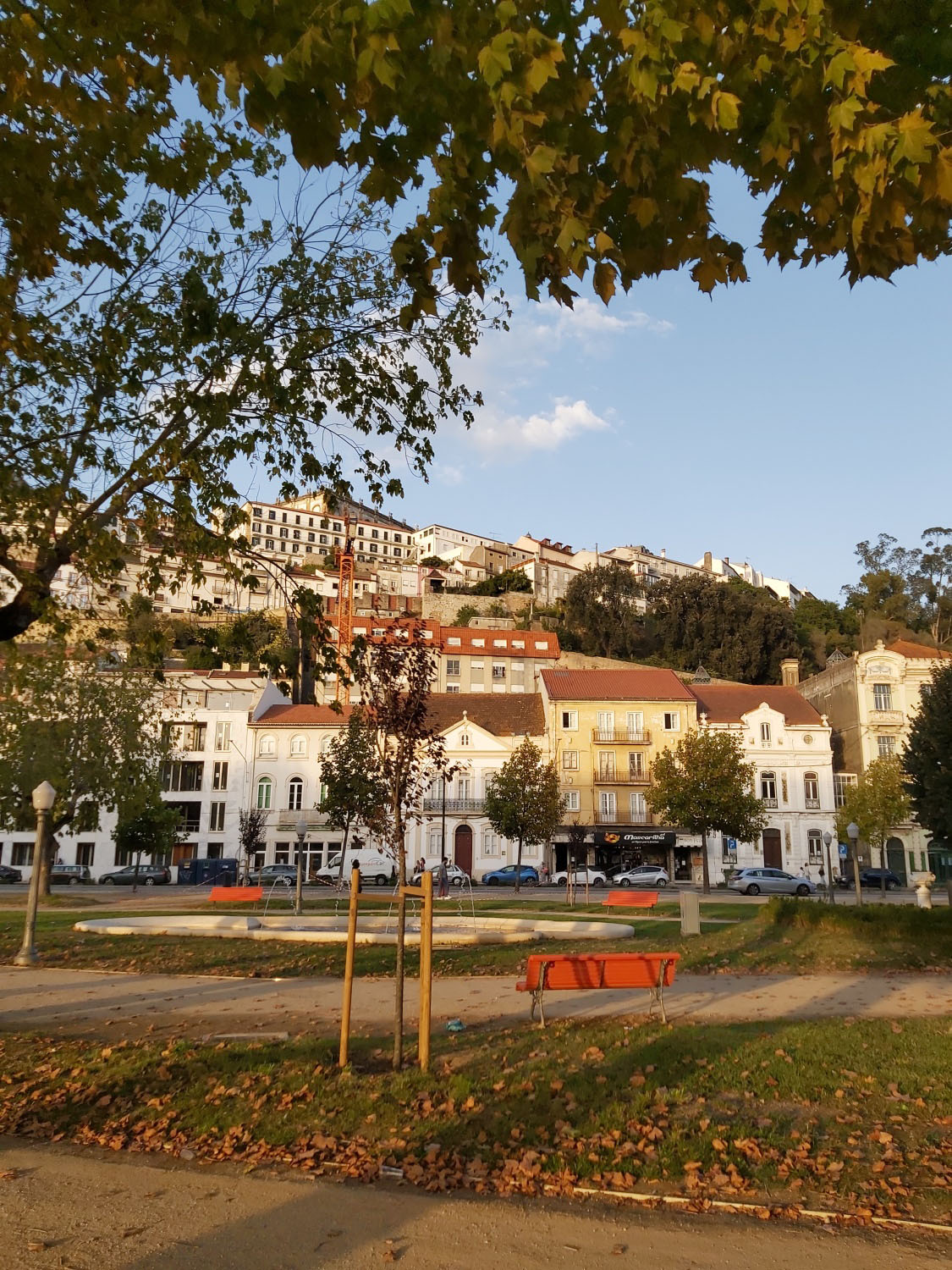
From the square where the Monastery of Santa Cruz stands (it is about a thousand years old) the road uphill to the university begins. This is the pedestrian street of Rua Visconde da Luz. Beautiful houses are lined up along it, the first and second floors of which are occupied by shops and cafes. Few pedestrians look at the shop windows, some just go about their businesses, and tourists take pictures of the local architecture.
Along the way, we were able to see the astonishing size of the meringues for which Coimbra is known.
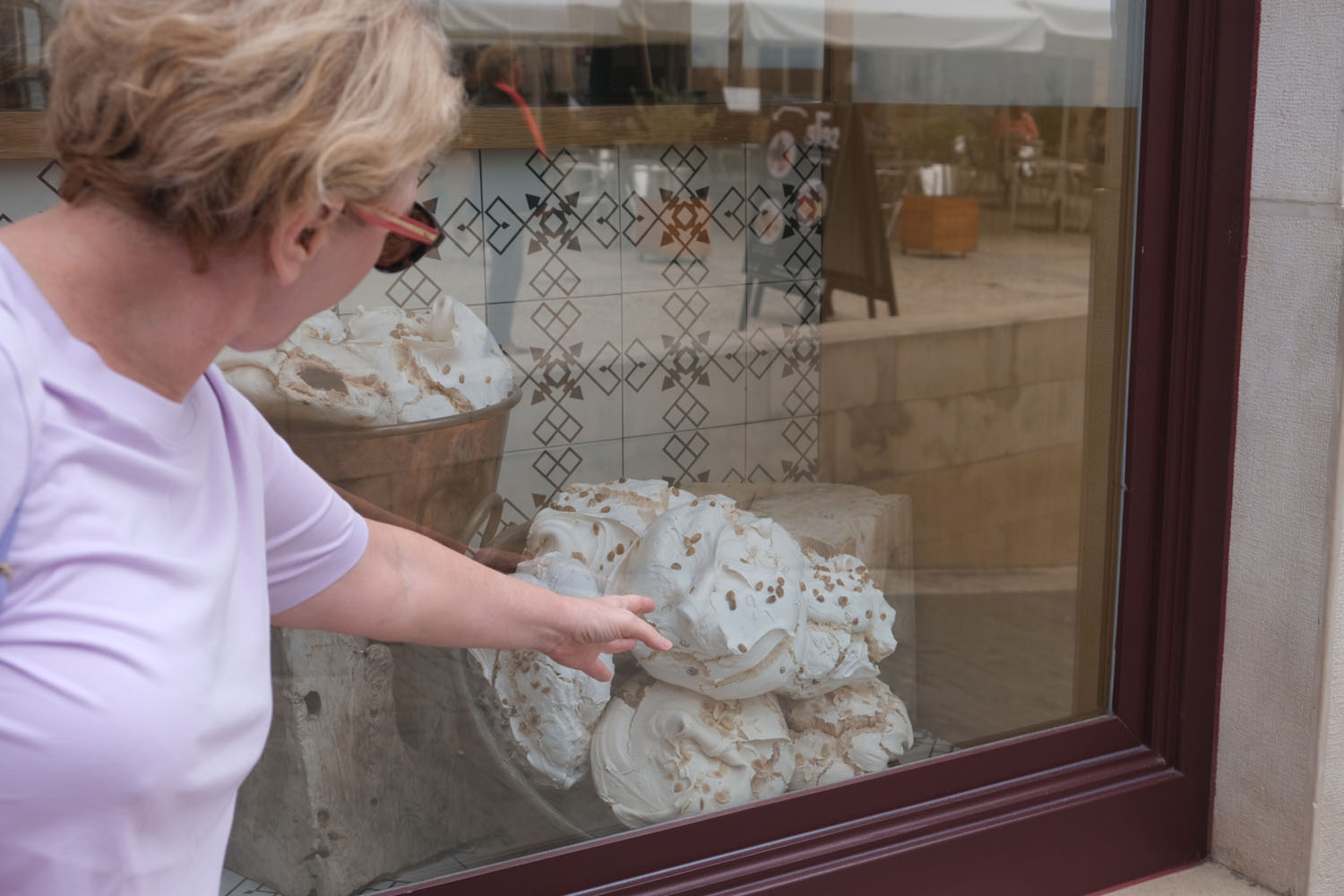
Continuing up the labyrinth of narrow streets, more like staircases, we came to the university.
The university was once a royal palace, but today, it is a complex of buildings that look like they were built in different centuries. There are a lot of statues on campus, but the birds and students don’t show the respect they deserve.
Since 1728, the University Library of Jouanin has been in operation. It is said that bats still guard 200,000 volumes from insects.
To get into the library, you need to buy a ticket. But at 11 o’clock in the morning, there were no more tickets. We thought that all those tourists whom we had not seen before in Coimbra and other cities had come here in the morning to visit the library. It’s a joke, but we were annoyed.
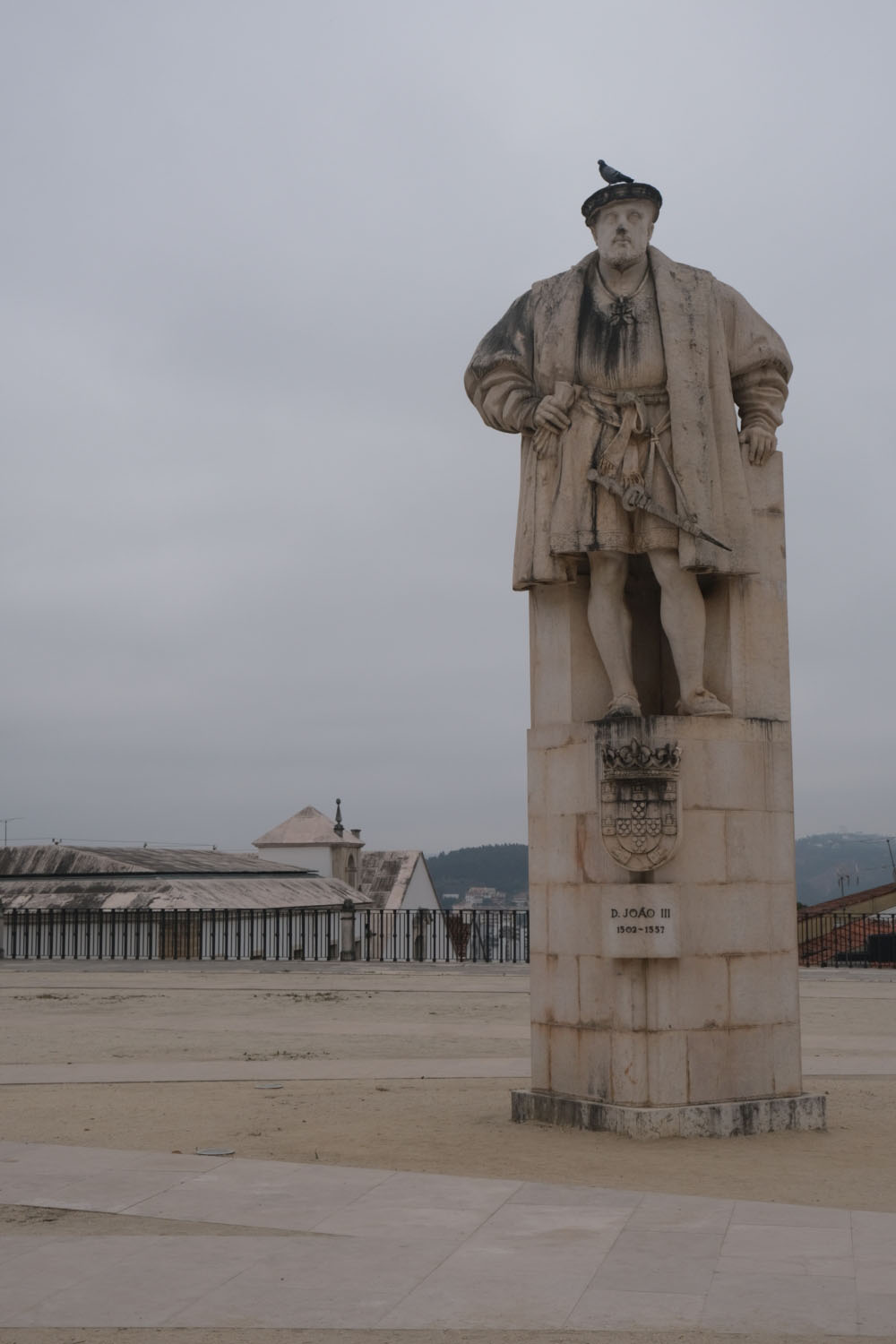

We saw an amazing piece of street art on the campus of the university on the wall of one of the buildings.
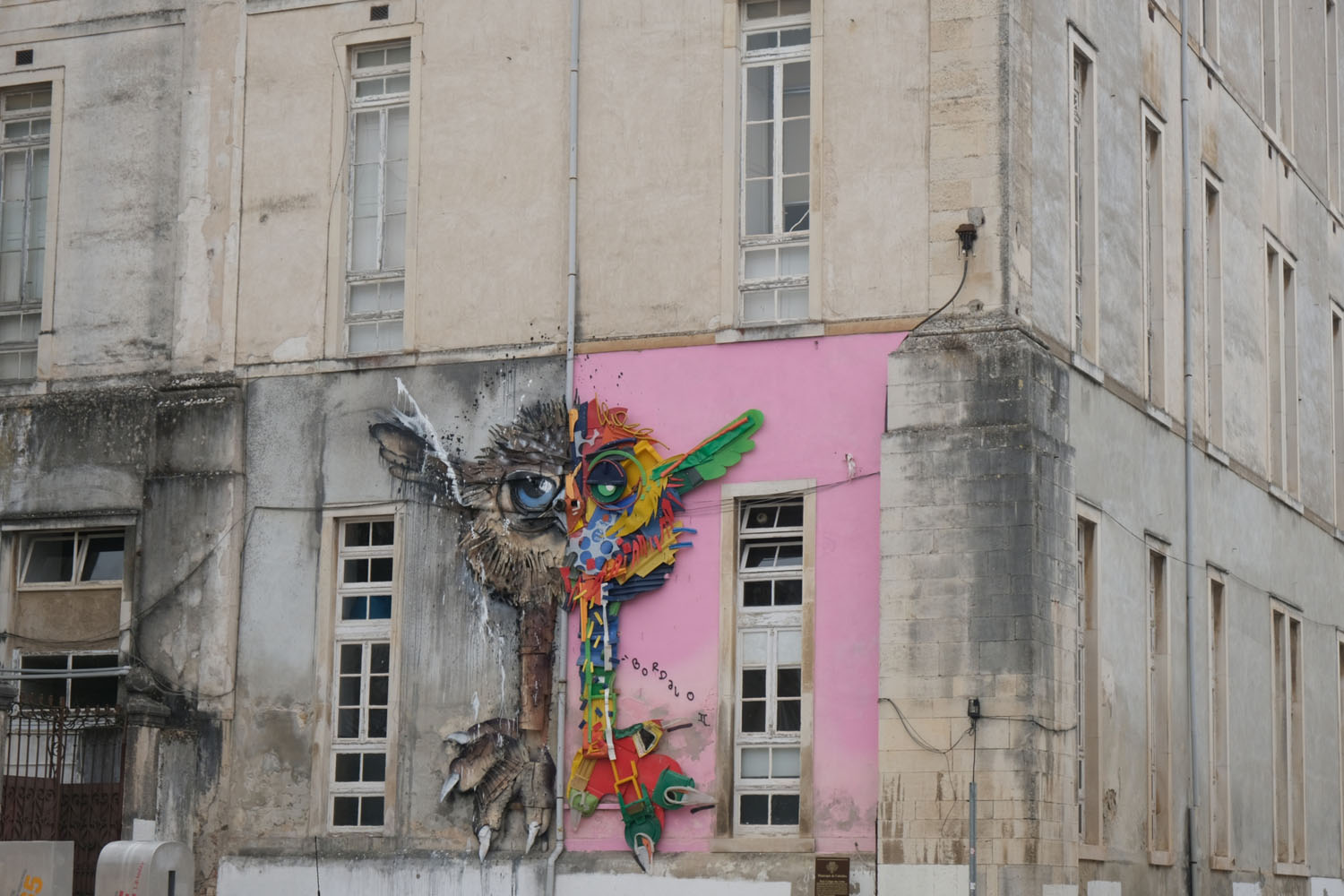
No one has been able to explain to us what this work means, or whether there is a connection with the well-known ‘Half Rabbit’ in Vila Nova de Gaia.
During the school year, students dressed as Harry Potter can be found on the streets of the city.
At least two legends link Portugal to J.K. Rowling’s books. According to one of them, she came up with the Harry Potter idea in Lello’s bookshop in Porto; on the other, the traditional uniform of students at the University of Coimbra inspired J.K. Rowling when writing her books.
We don’t know if that’s true or not, but the students look great in their uniform, and they have a great sense of humor.
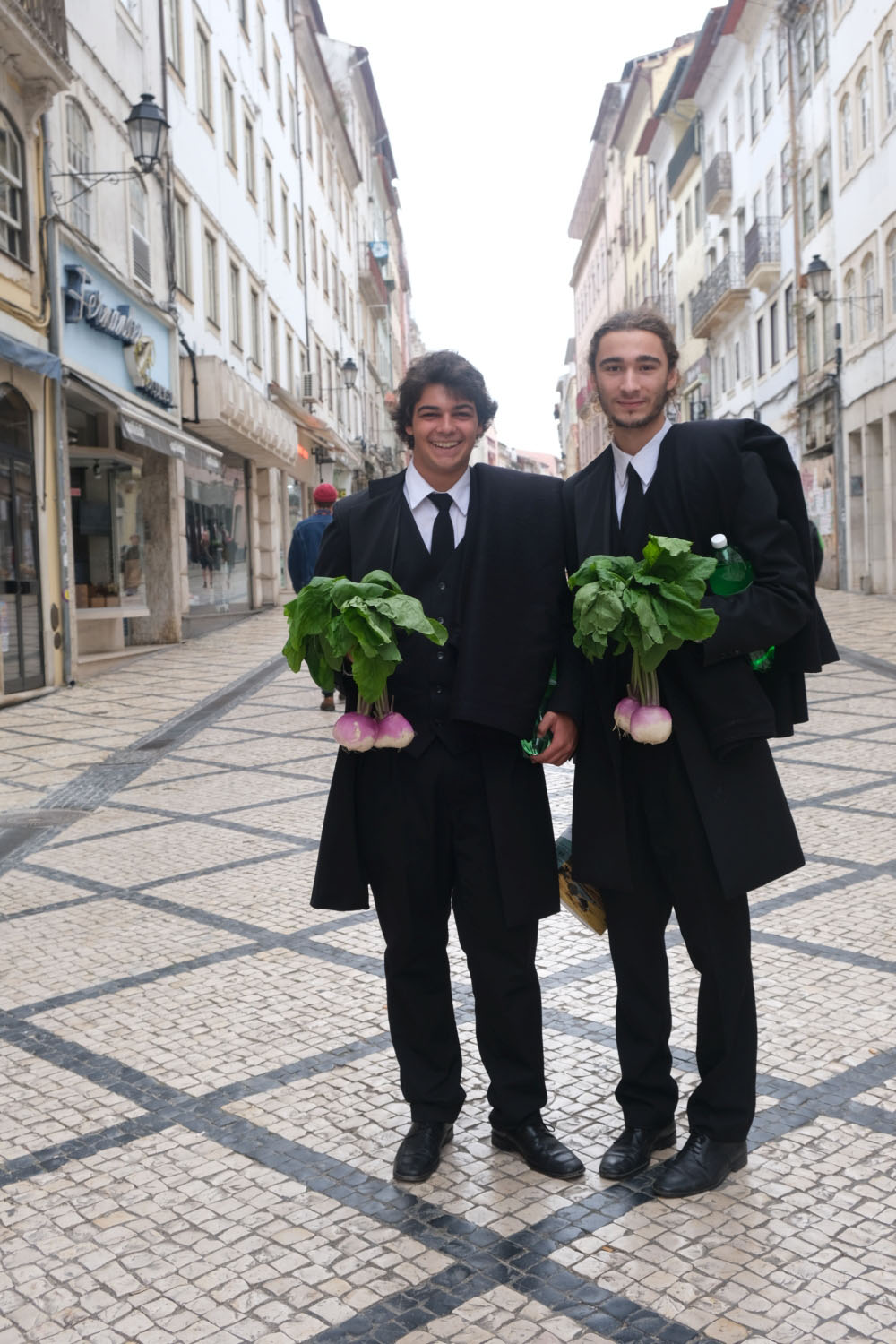
The day in Coimbra was cloudy but left vivid impressions. In the evening, the sight of a lighted train running along the river reminded us that tomorrow the journey continues.
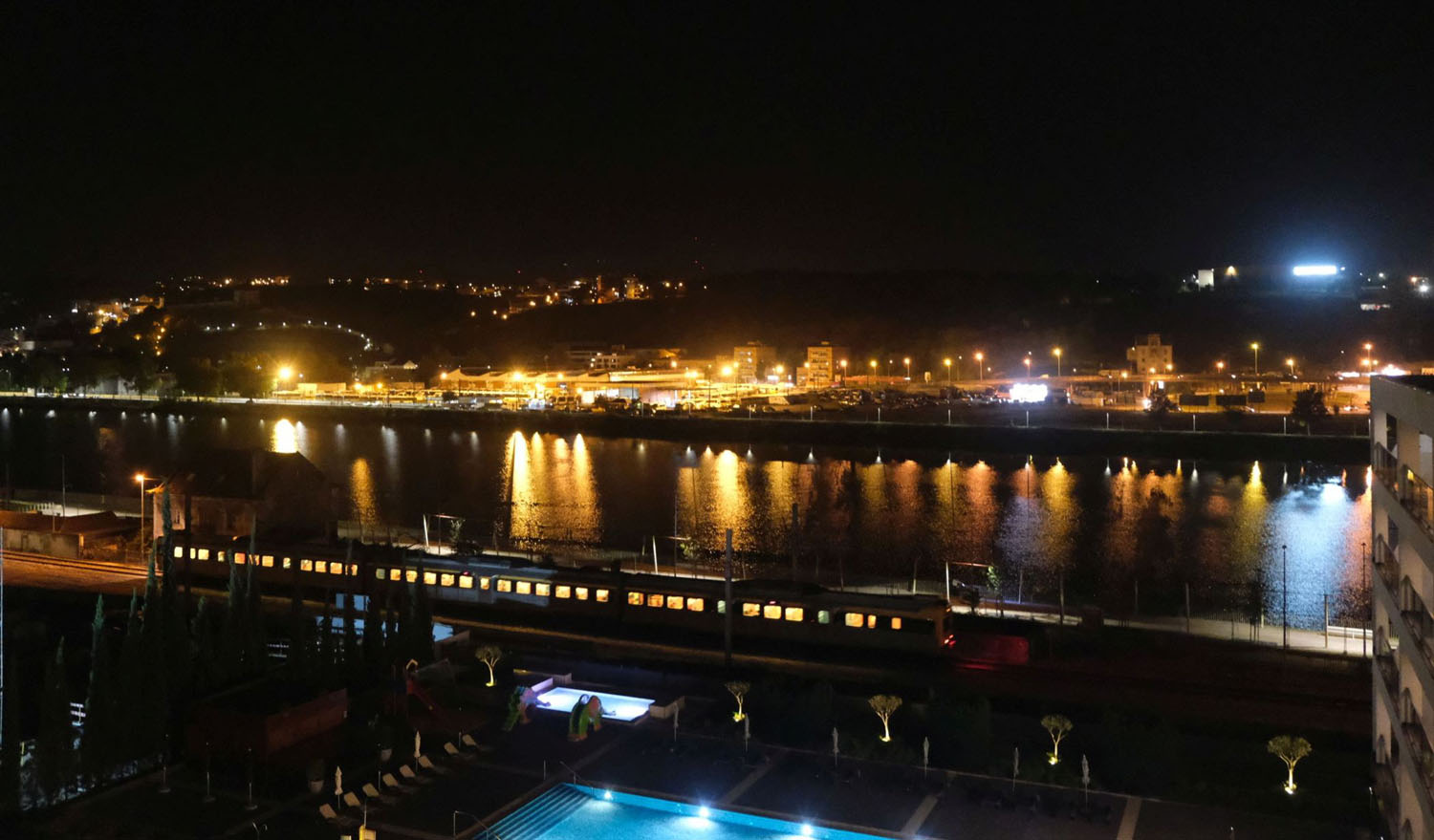
Aveiro
Aveiro is often compared to Venice – there are canals, bridges, gondola-like boats, and the city was a serious seaside center of trade in the past.
Such comparisons often raise expectations, but our acquaintances have warned us that – «they call it the Portuguese Venice… but not quite the same haha!»
However, canals, traditional boats with patterns, and Art Nouveau buildings give this city a unique flavor.
The bright colors in which the boats and the facades of the buildings are painted create a special picturesque atmosphere.
The historic center of the city is small, but very cozy. Aveiro left us with the impression of a typical, beautiful and well-kept Portugal town, but with its own special face.


RIGHT: Samsung A70 . F/1.7 . 1/1700″ . ISO 64
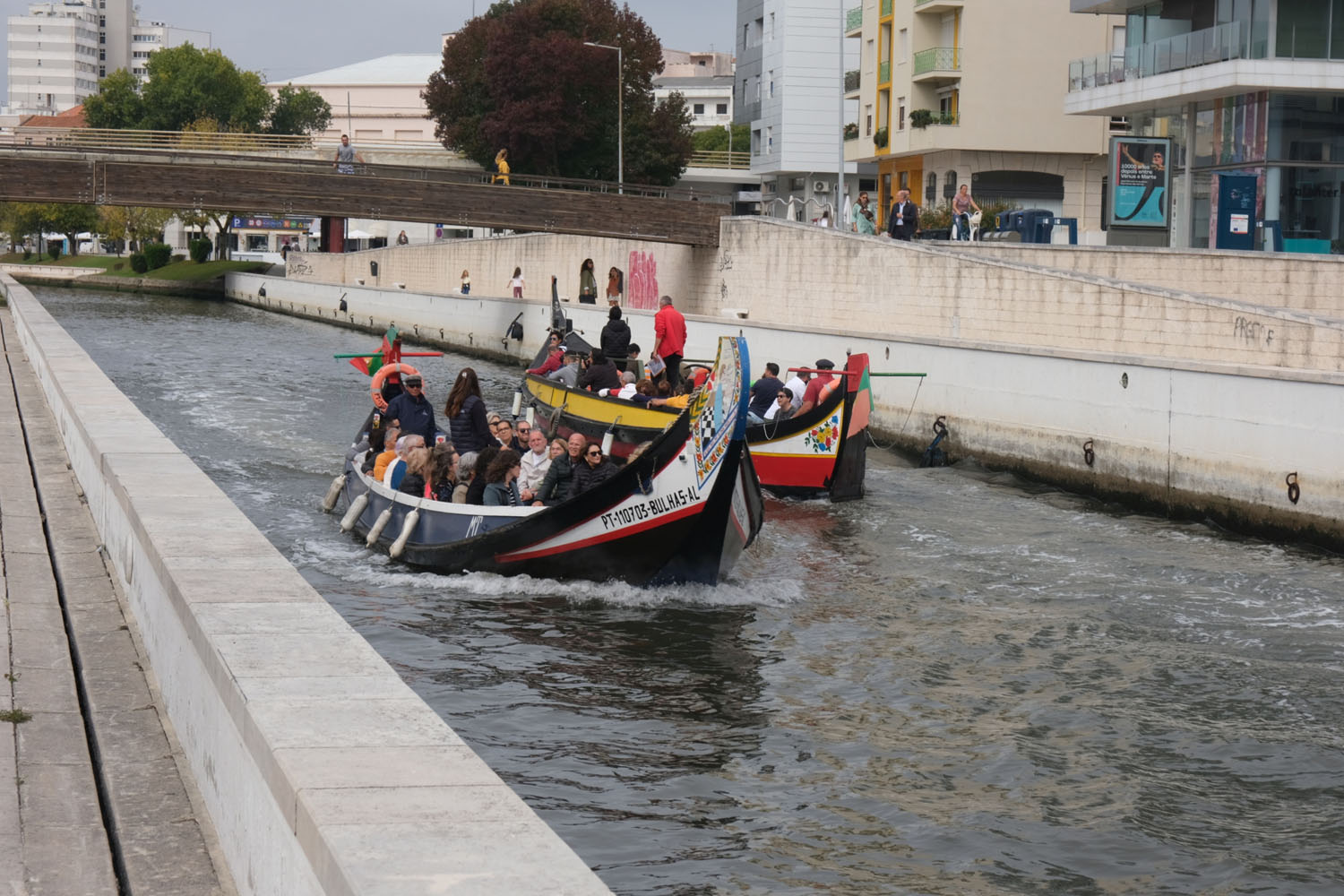
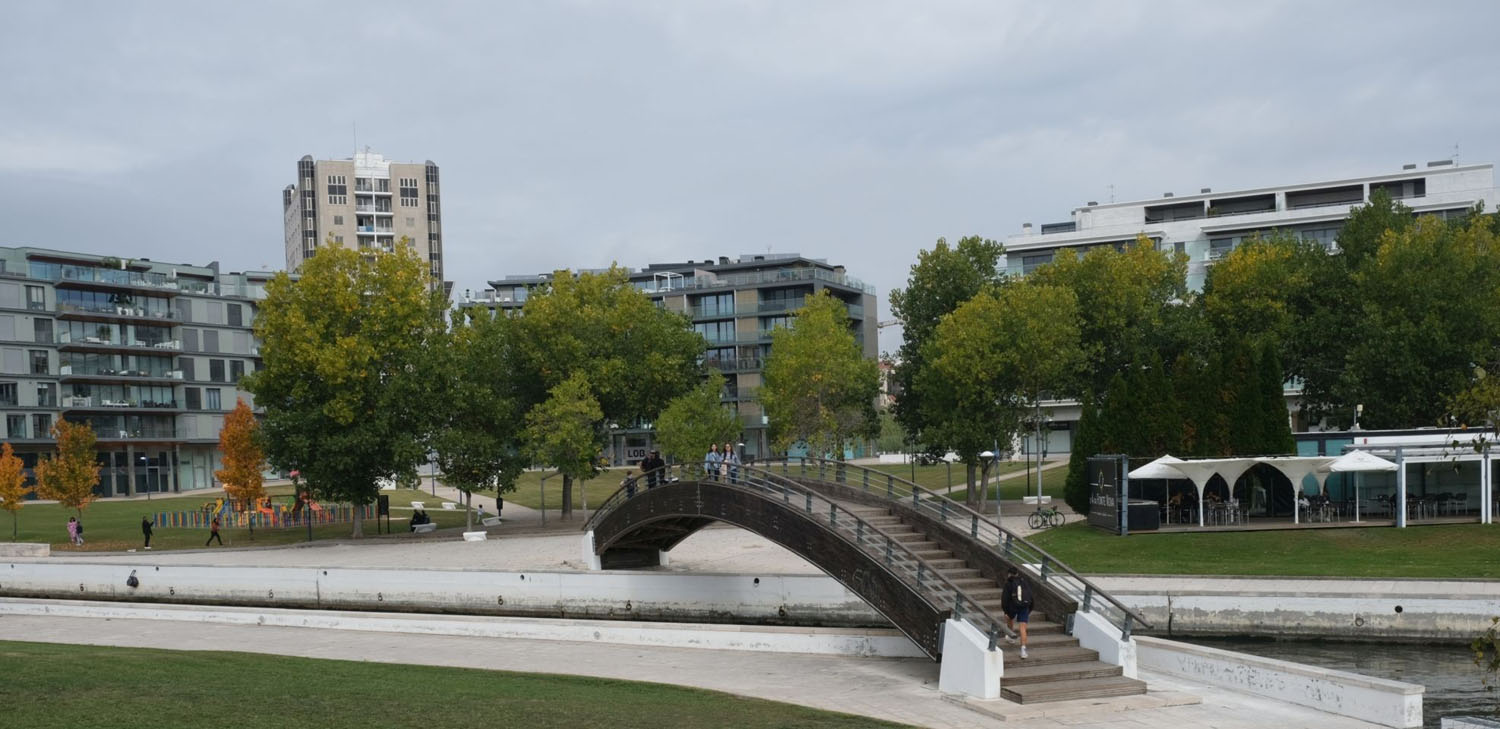

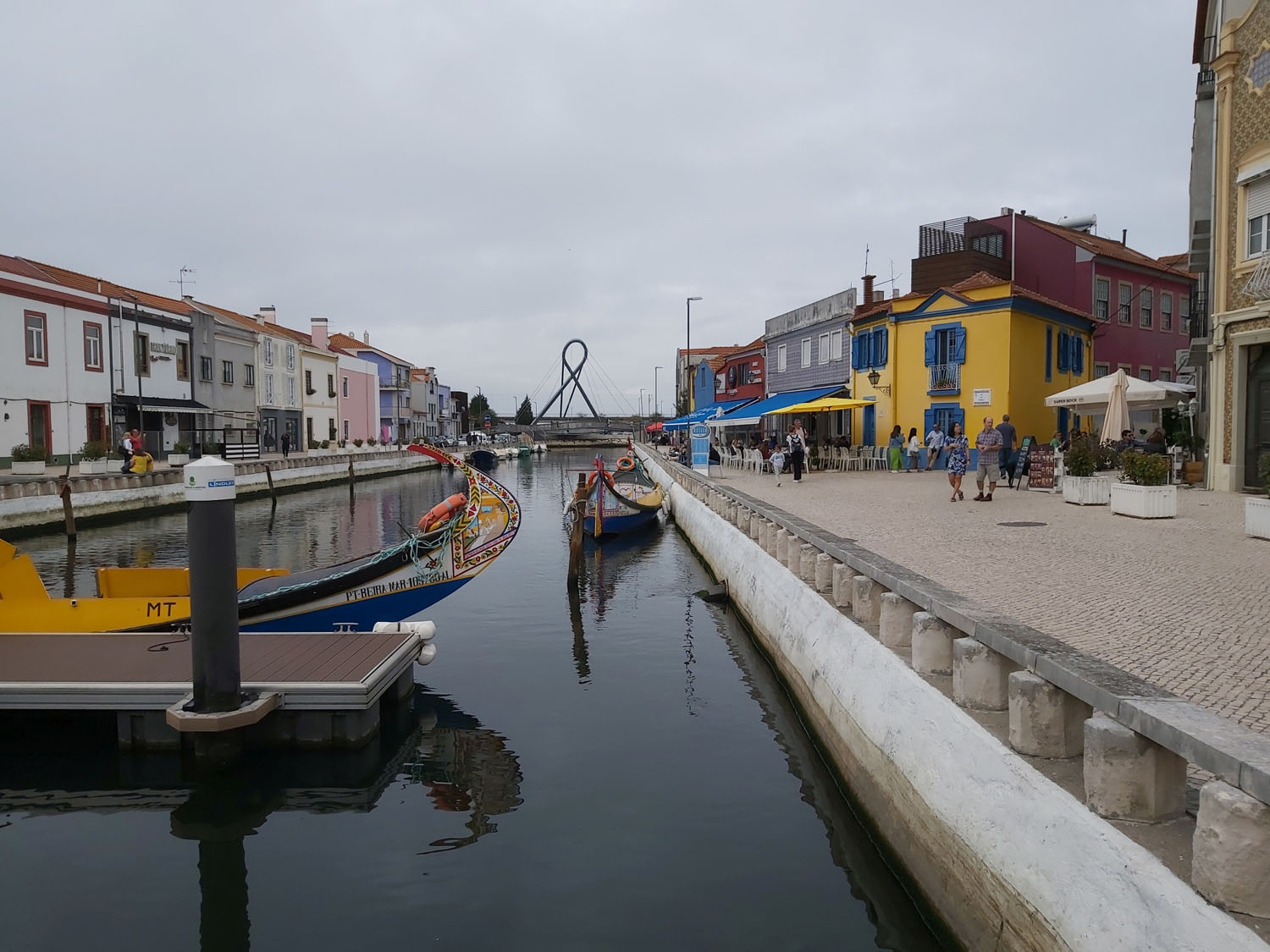
RIGHT: Samsung A70 . F/1.7 . 1/2900″ . ISO 64

Guimarães
Guimarães is a very special city in Portugal. It is the first capital and birthplace of the country’s first king, and one of the oldest cities in Portugal. The date of its foundation is considered to be 1096. It was here that Afonso Henriques was born, who, having freed Portugal from the influence of León and Castile, turned it into an independent kingdom.
Among the many attractions of the city is the famous castle, which stands on the highest place, as befits an ancient fortress. The battlements of the fortress walls, at the foot of which there are stones with thick green moss, create an unreal atmosphere and immerse us in the Middle Ages.
Apparently, we caught the period of student holidays – interestingly, and students in black cloaks fit well into the medieval landscape.
The town itself is also very cozy, pretty, giving a good impression of the classic Portuguese countryside.
It is an amazing place where modern life takes place in a medieval setting.



RIGHT: Fuji X-T30 . Fuji XF18-55mmF2.8-4 @22.30mm . F/10 . 1/60″ . ISO 250
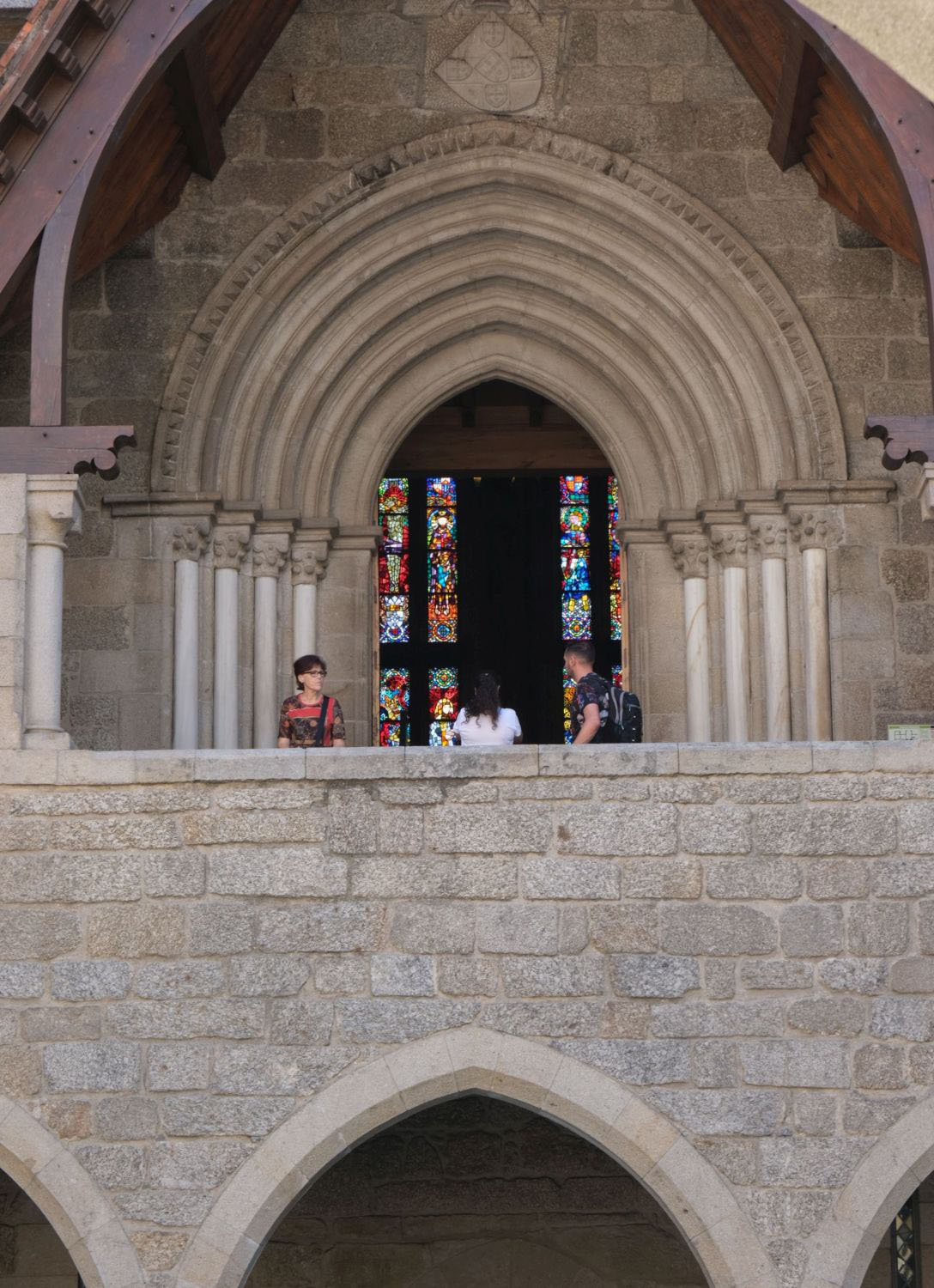

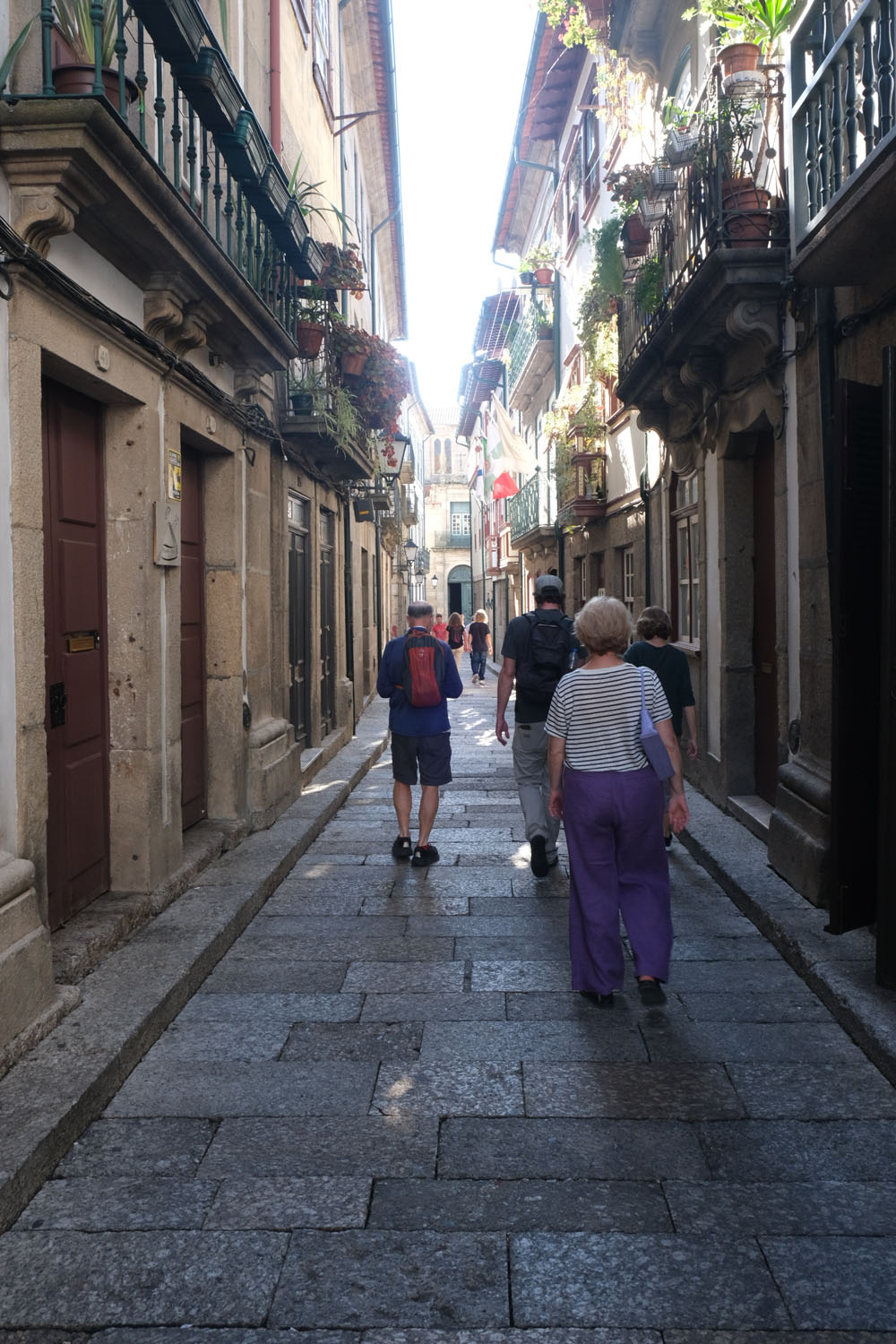
Braga
Our trip to the city of Braga was primarily planned with the aim of seeing the Bom Jesus do Monte with the famous staircase.
Of course, we also wanted to see the city – it is recognized as the center of Catholicism, and the residence of the archbishop has been located here since the beginning of the 16th century.
We were expecting a huge number of churches and a corresponding ancient atmosphere. But the center of the city – Republic Square – greeted us with an absolutely modern view (and with a fountain!).
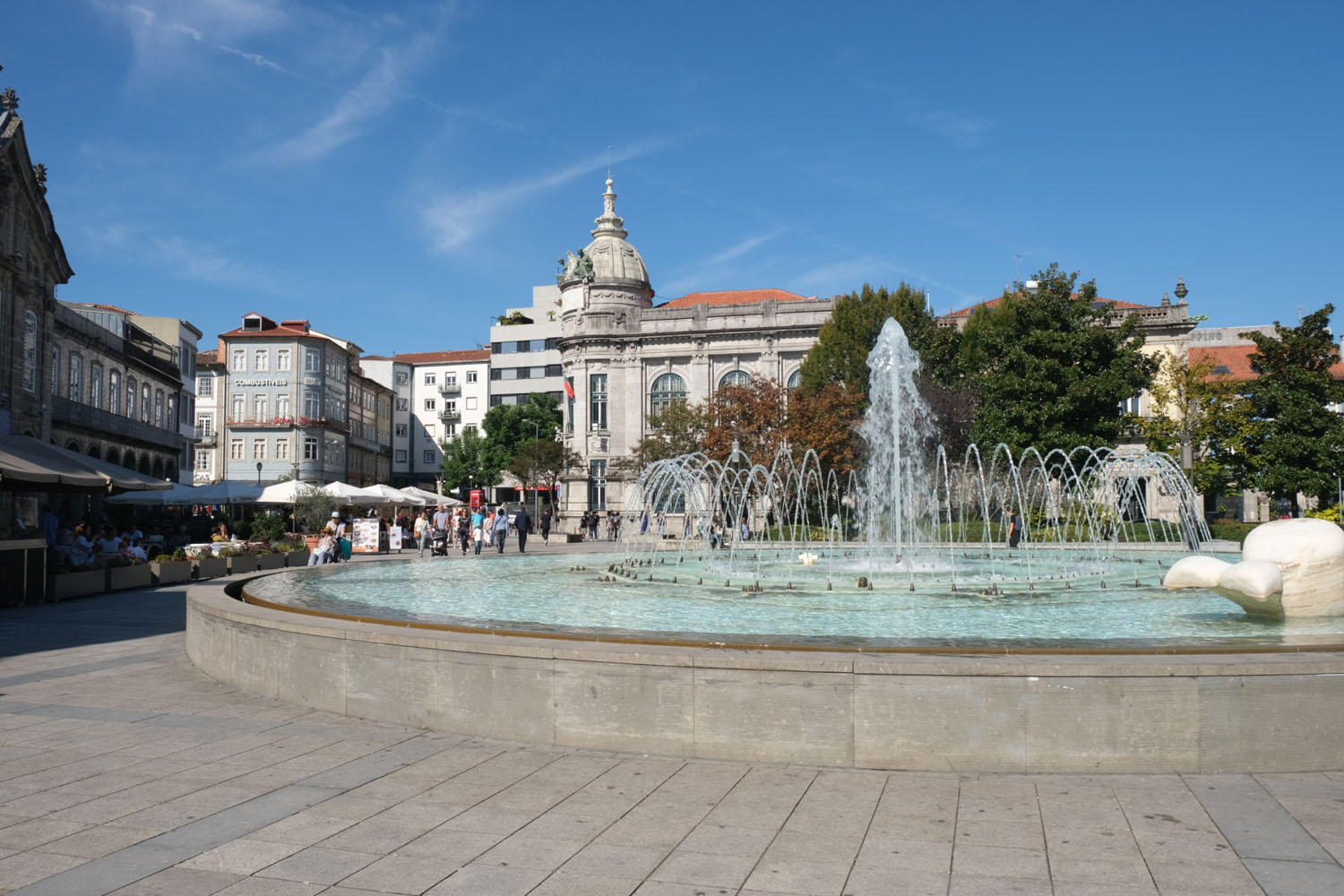
But the ancient part of the city is literally a few hundred meters from the square. And there you can see history in stones.
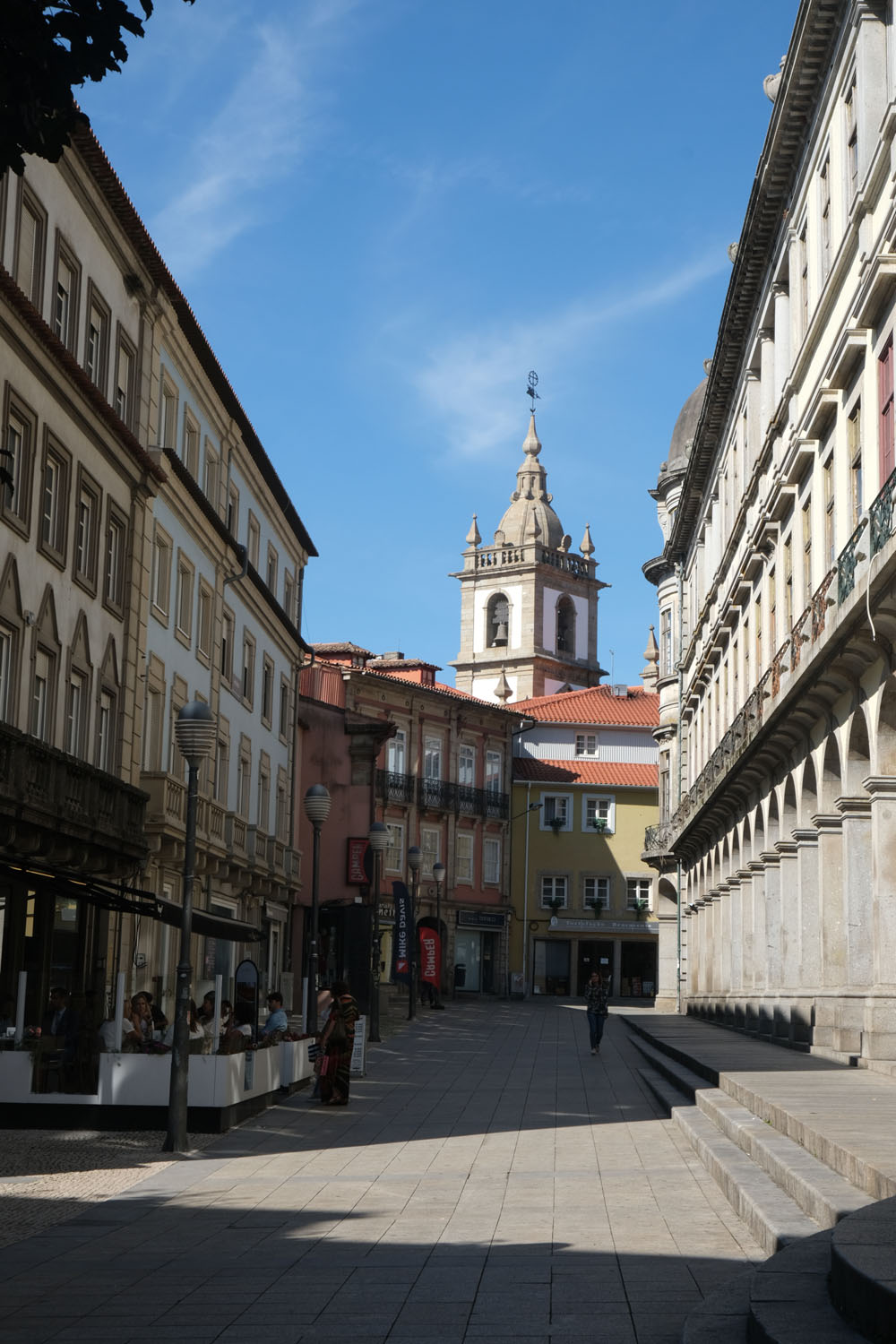

RIGHT: Fuji X-T30 . Fuji XF18-55mmF2.8-4 @18mm . F/13 . 1/60″ . ISO 320

From the Republic Square, we could see our initial goal in the distance – the Bom Jesus do Monte.

Photos of the staircase have been replicated in myriad numbers – from any angle and in any weather. It looks really fantastically beautiful and unusual. From the top, an amazingly picturesque landscape opens up.

Next to this beautiful architectural complex, there is a wonderful park, which adds to the charm of this place.
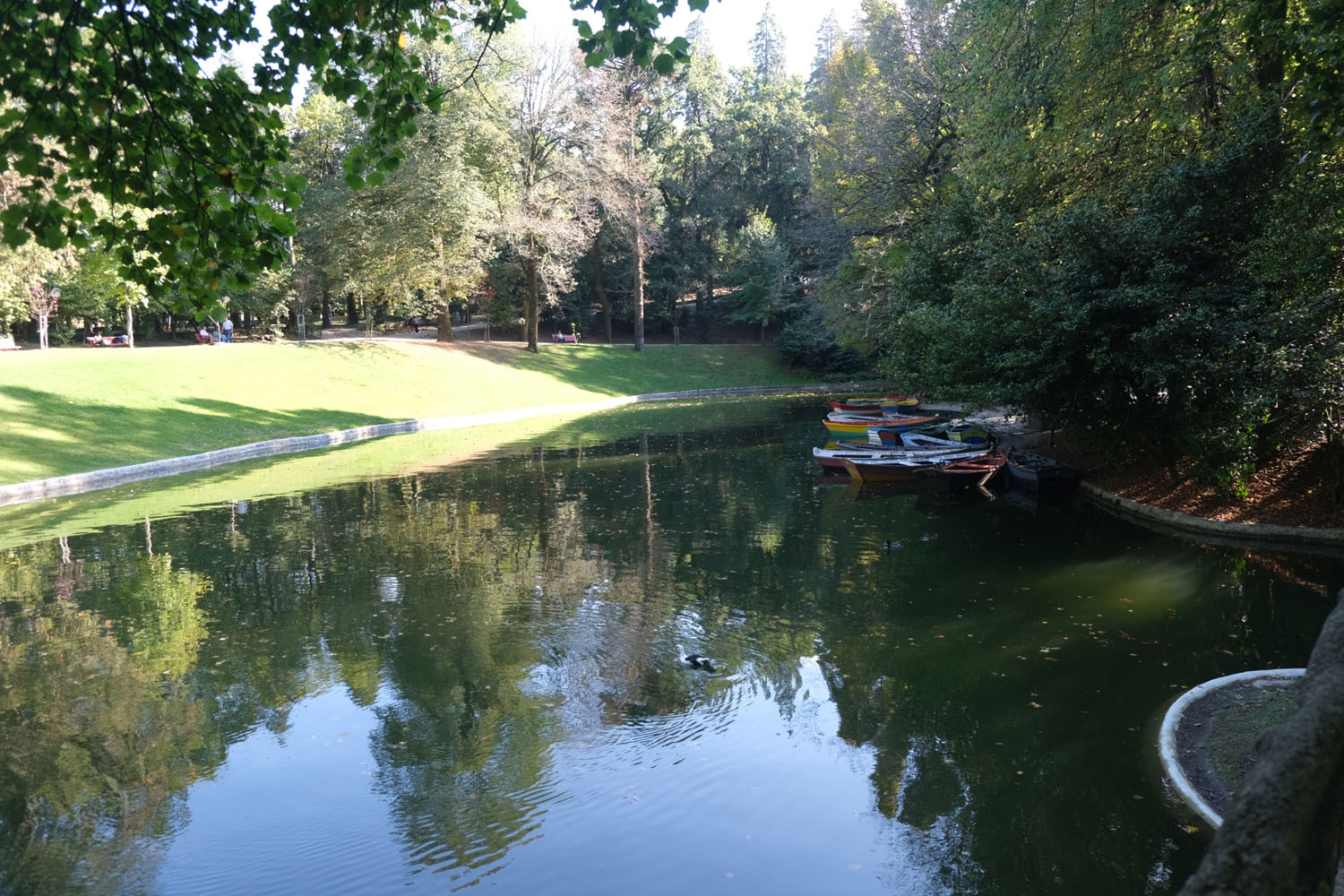
We remembered Braga as a very beautiful, calm, well-groomed city with beautiful architecture, successfully combining antiquity and modern lifestyle. And, of course, we were impressed by the large number of churches and fountains!
We have not brought some epic photos from this trip. But we brought a lot of photos that will revive our memory and the impressions we got on the trip.
And our experience exceeded our expectations.
Now that we look at the map of Portugal and see how many smaller and bigger cities we can visit, we want to go for a new experience as soon as possible!
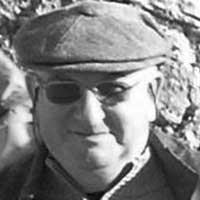
“My name is Michael Mesh, Ph.D. in Physics and Mathematics.
Now retired. Worked for the last 25 years in different high-tech companies in the field of optical communications. Now family, travel, photography, movies, books and music fill my time.”



